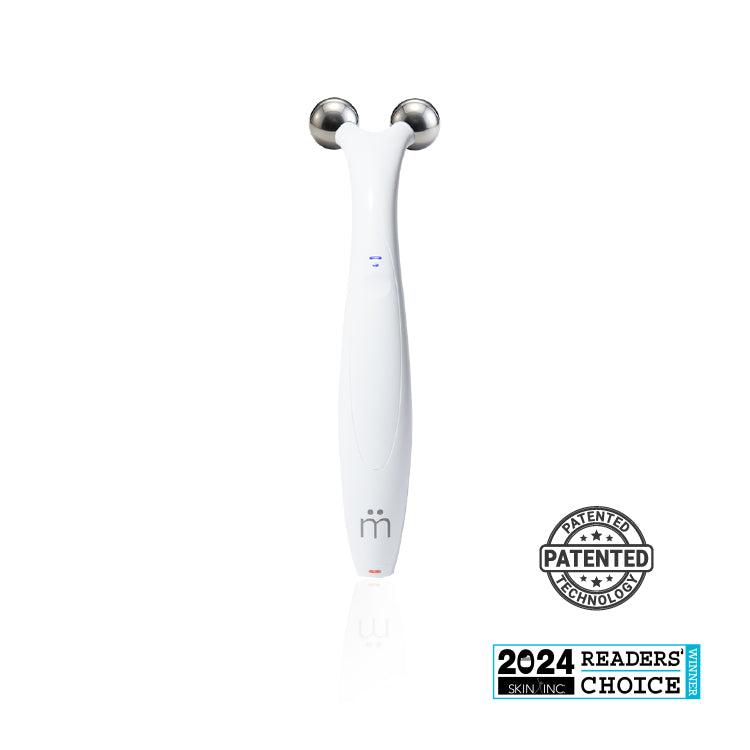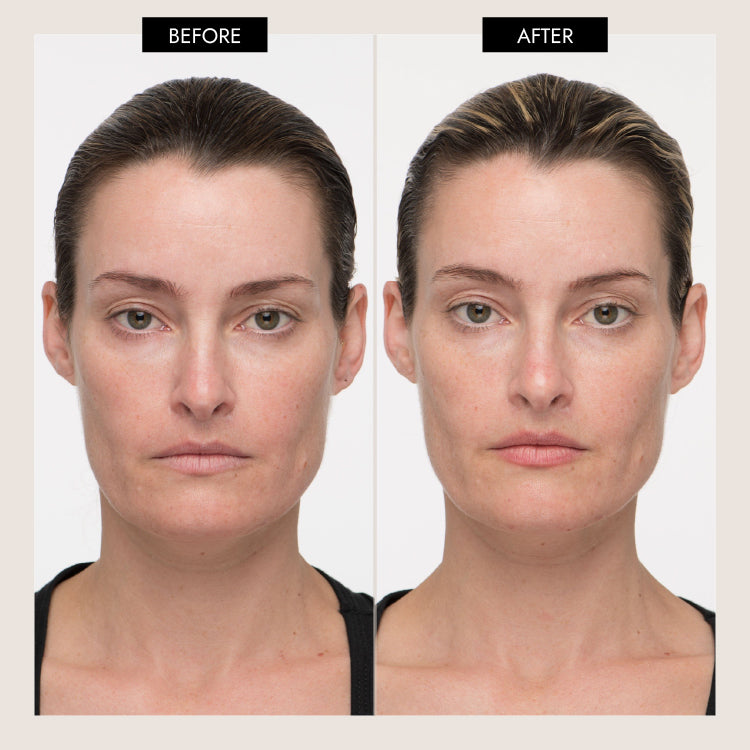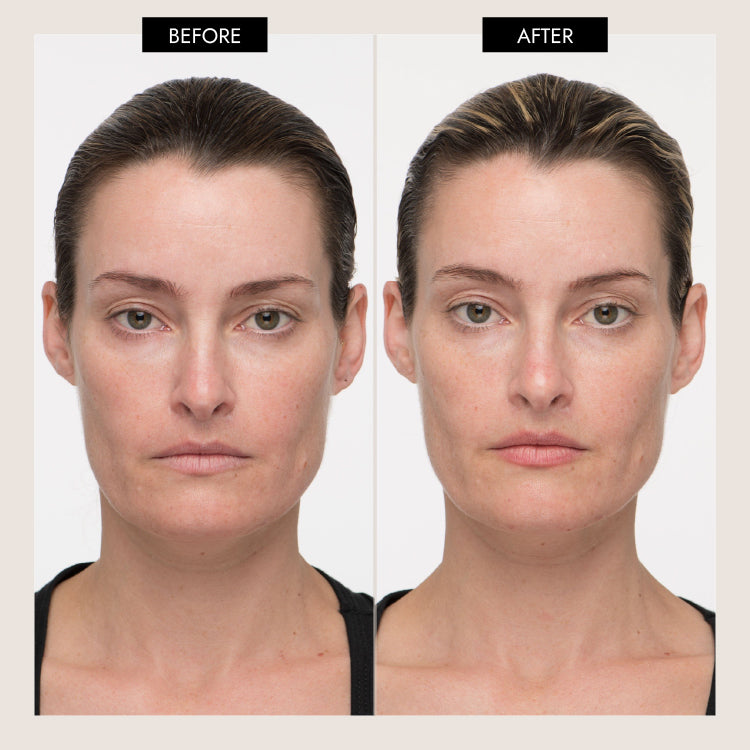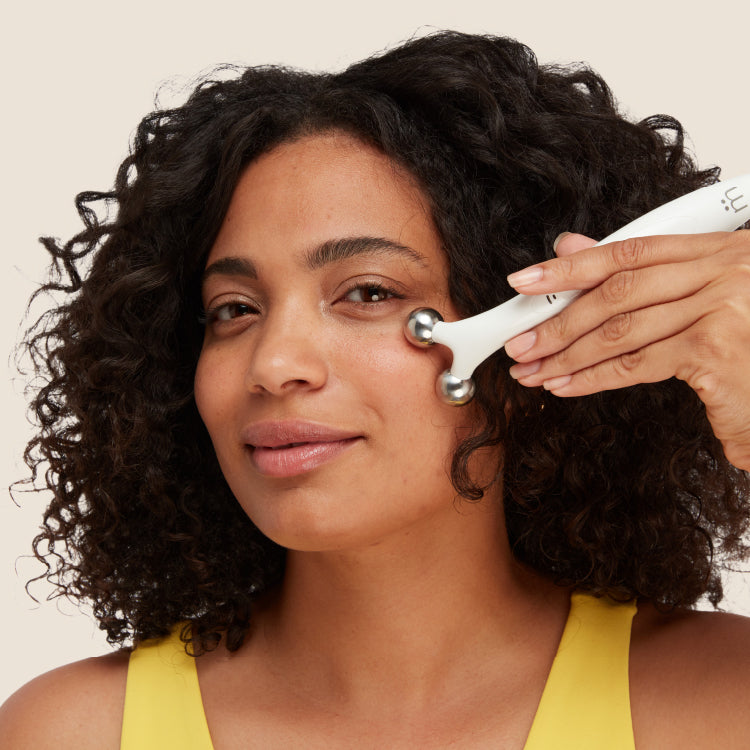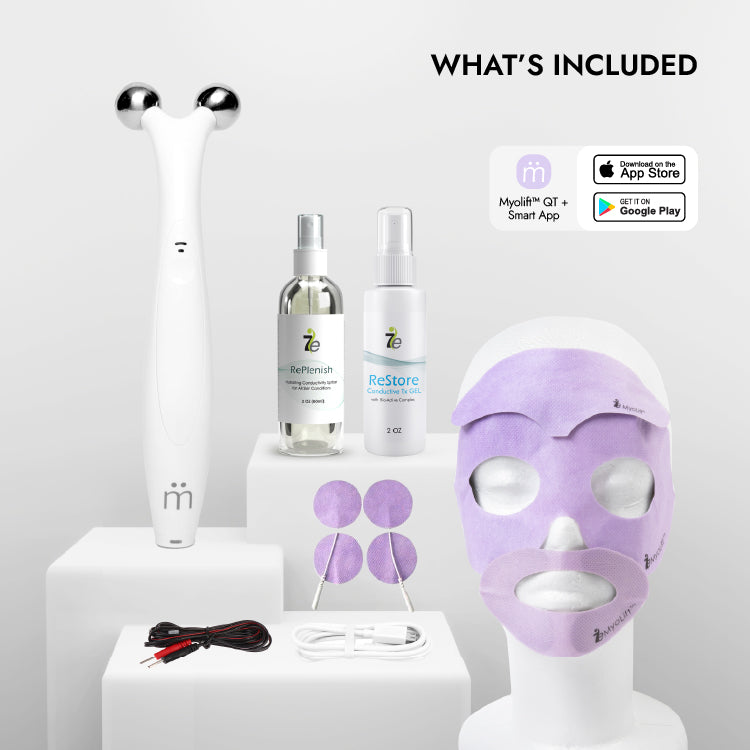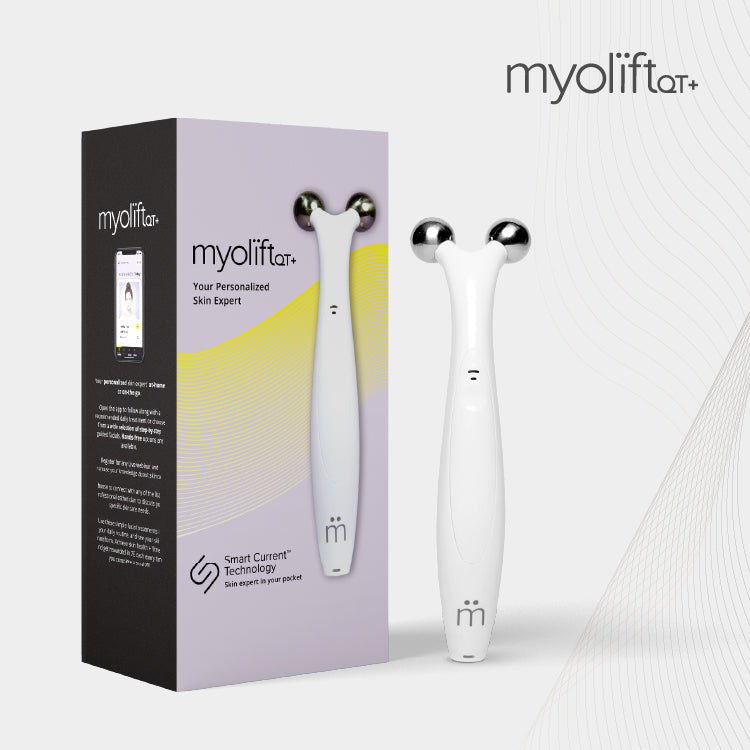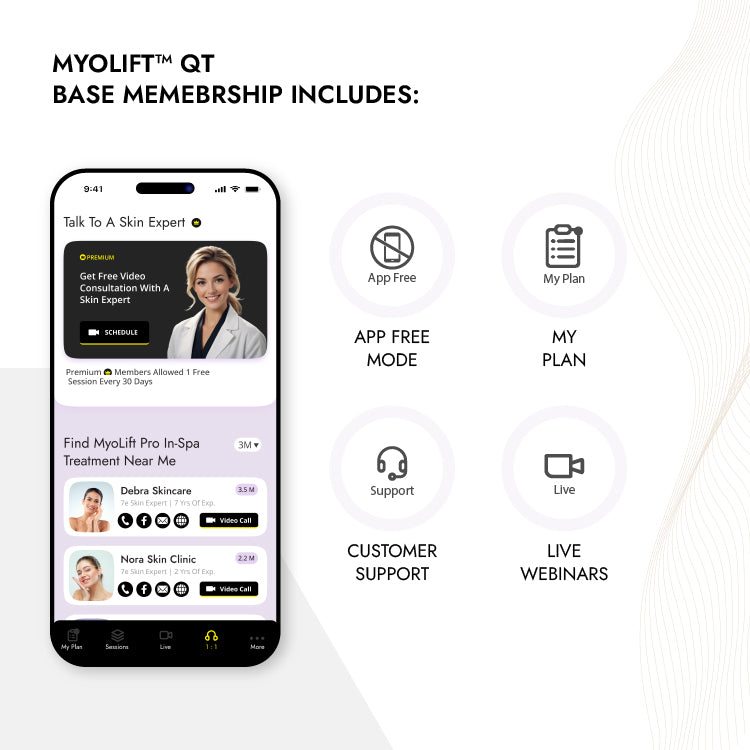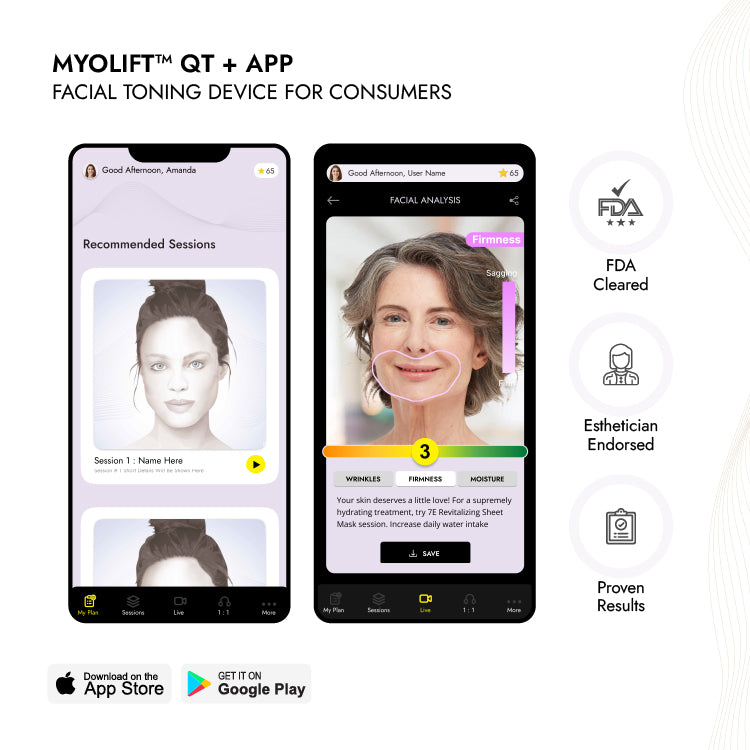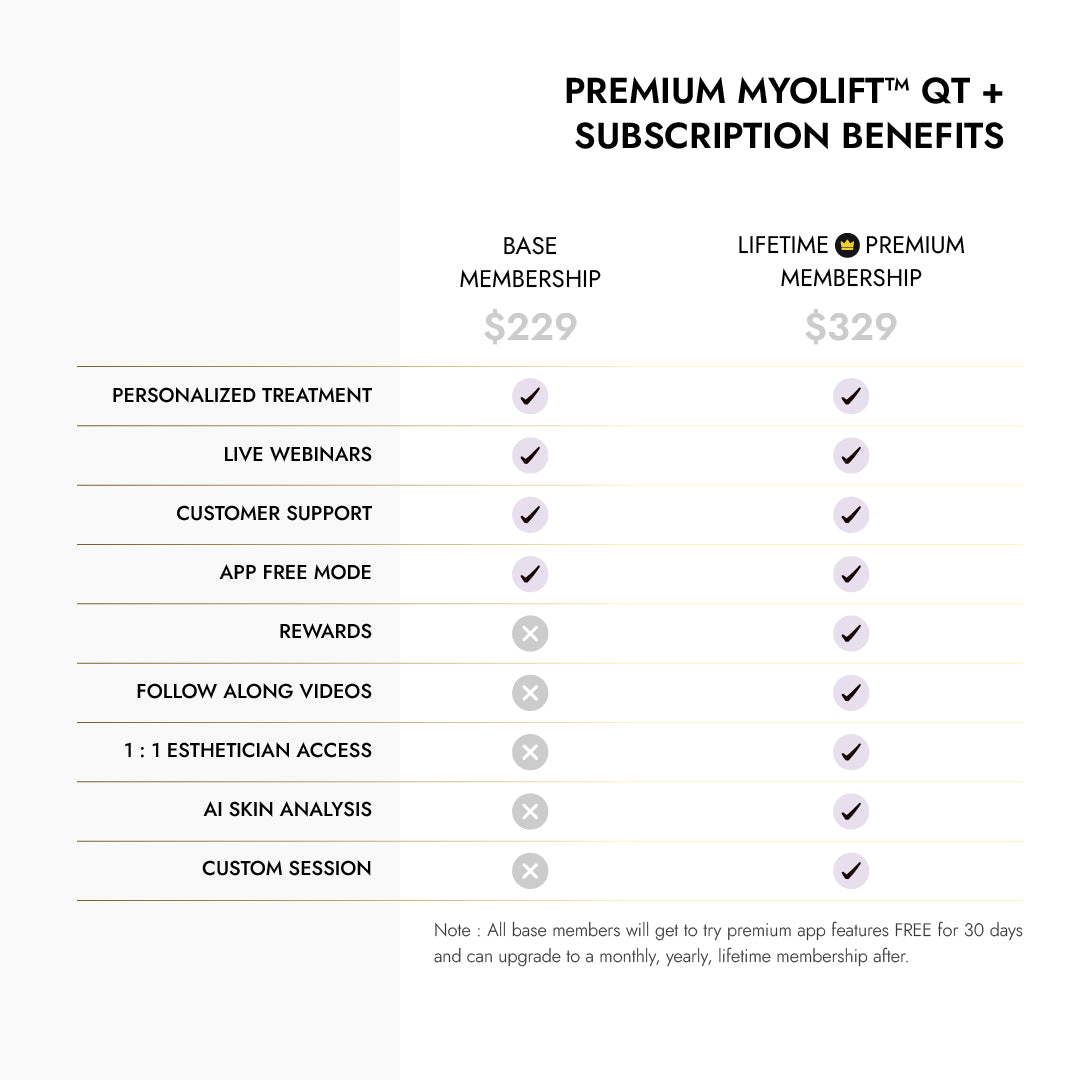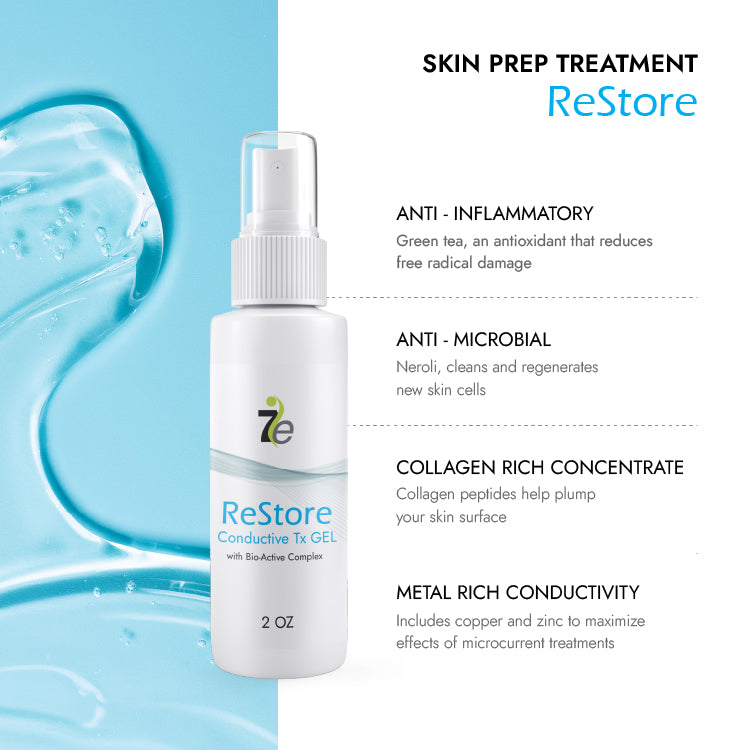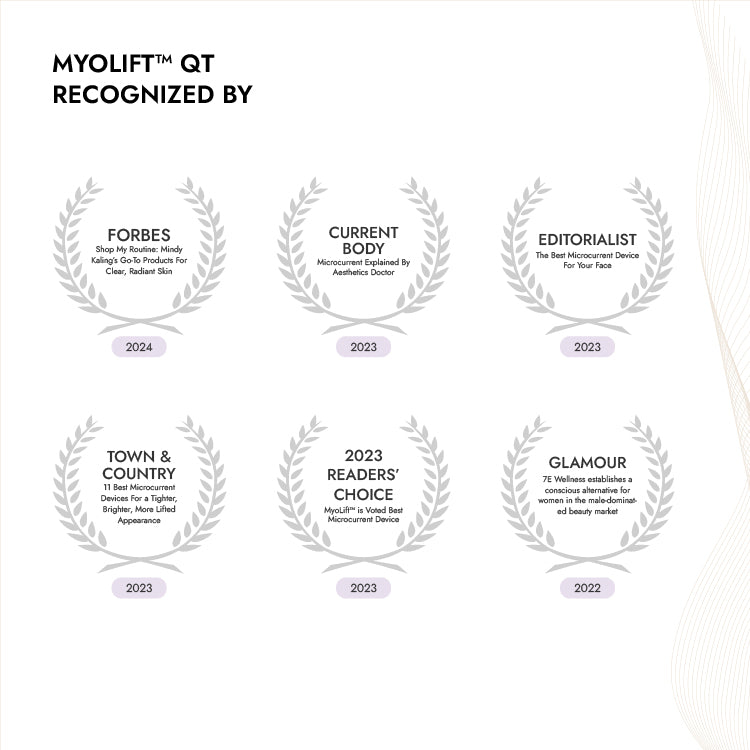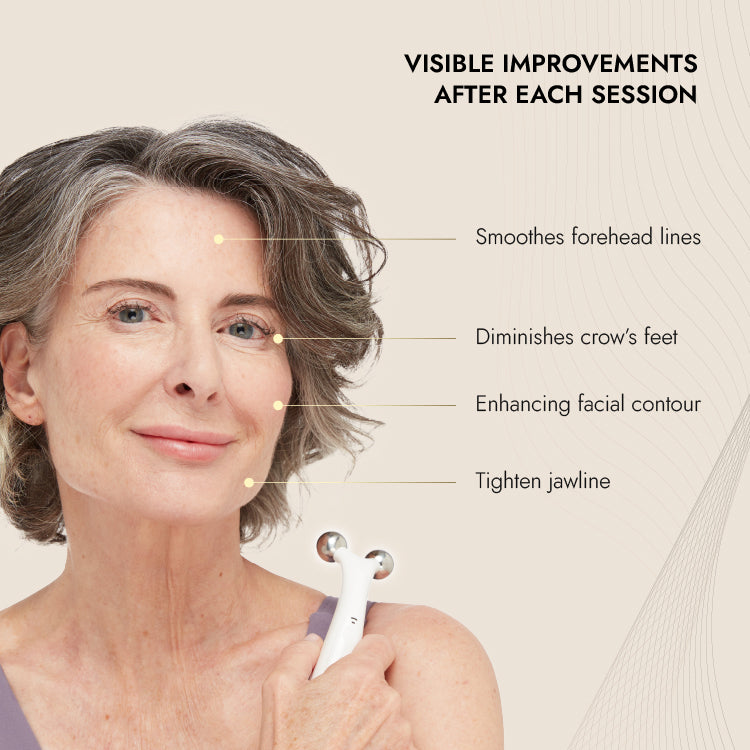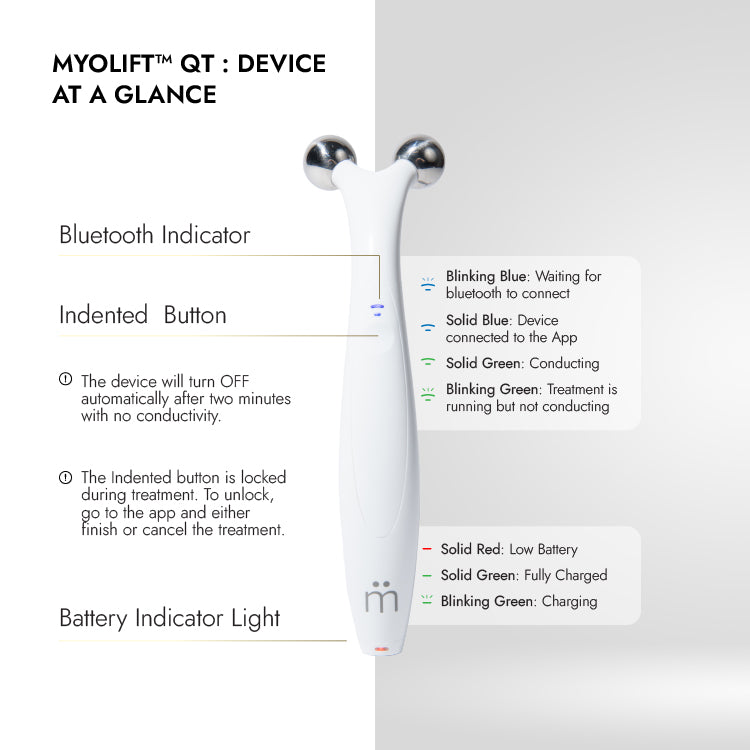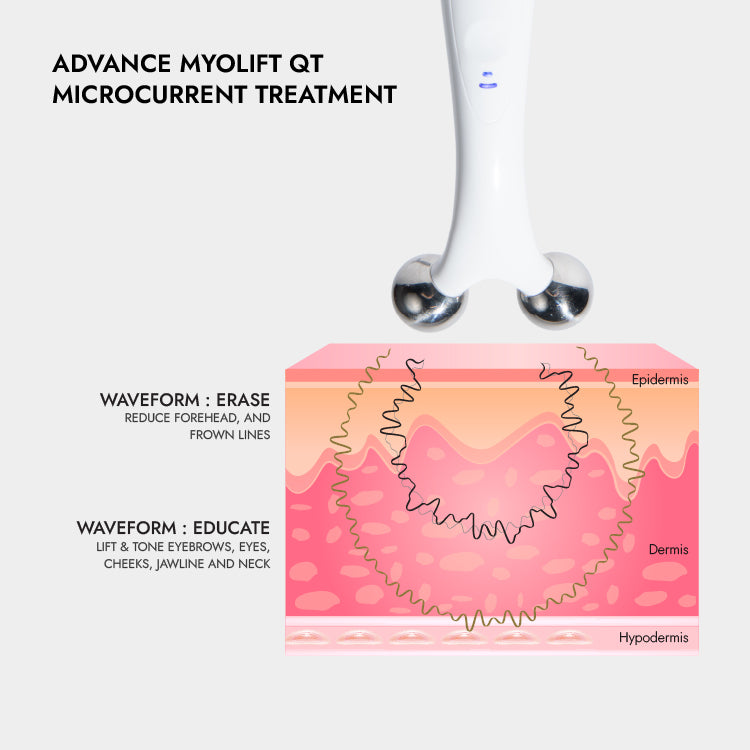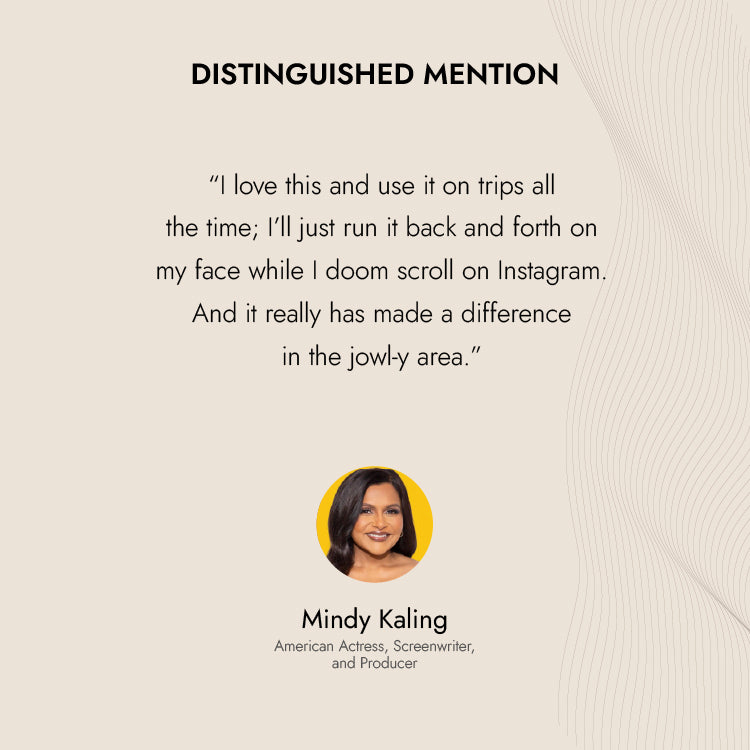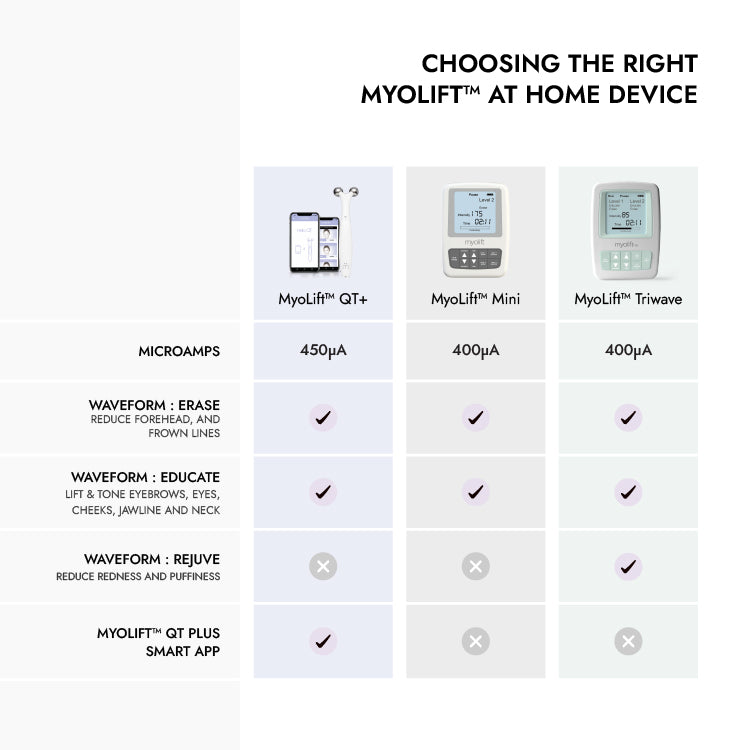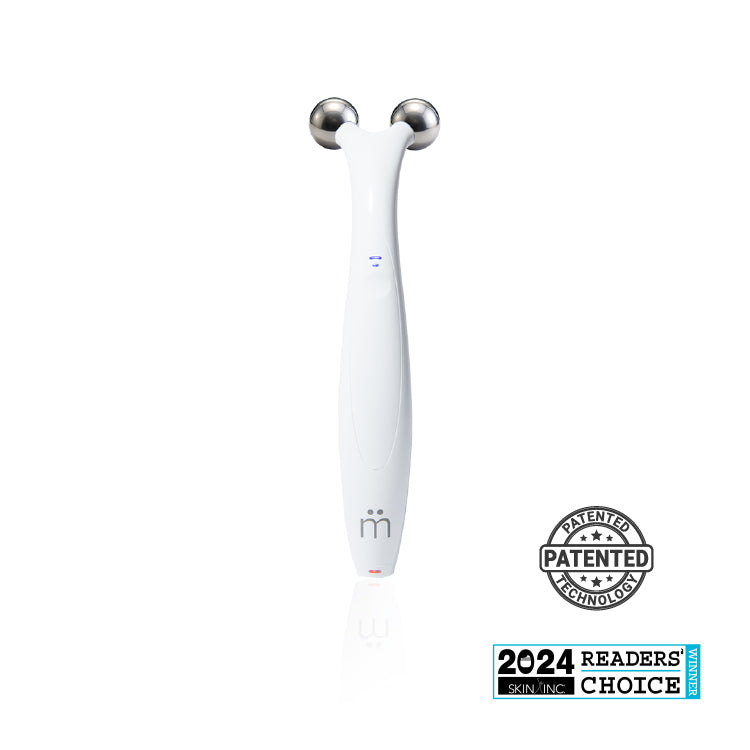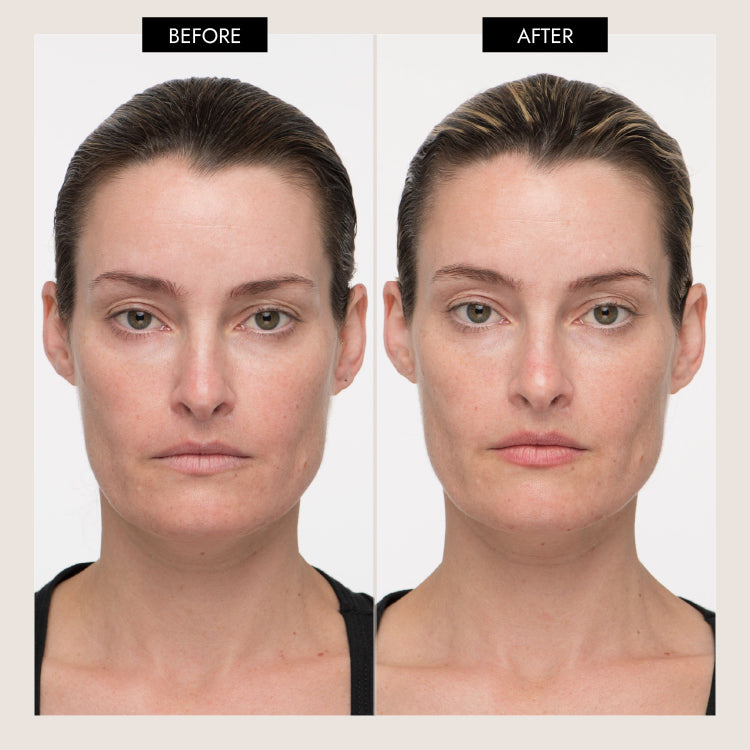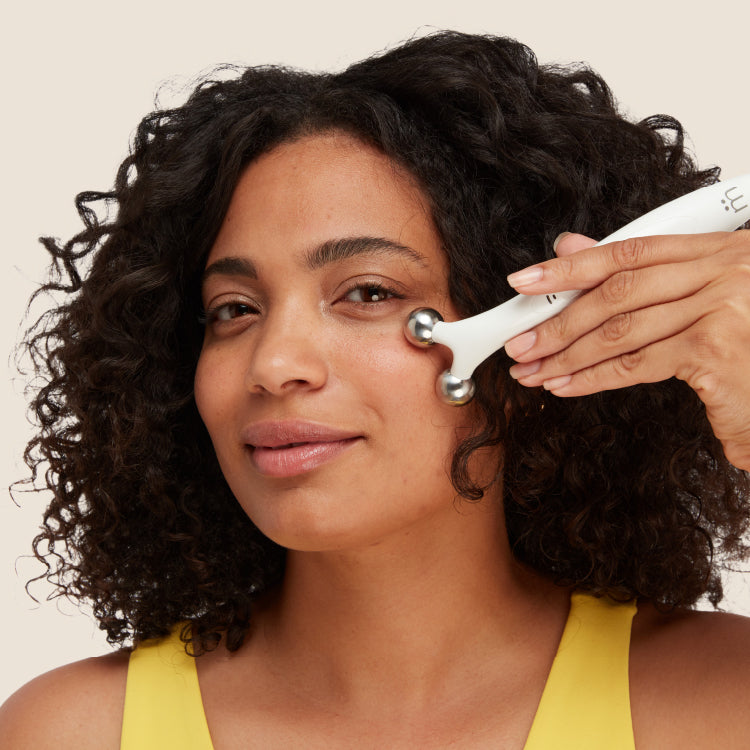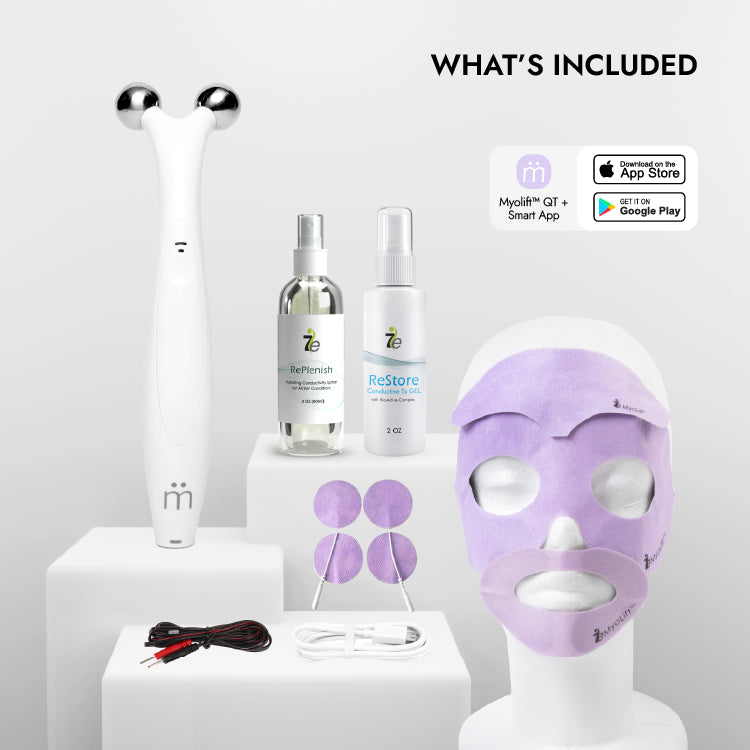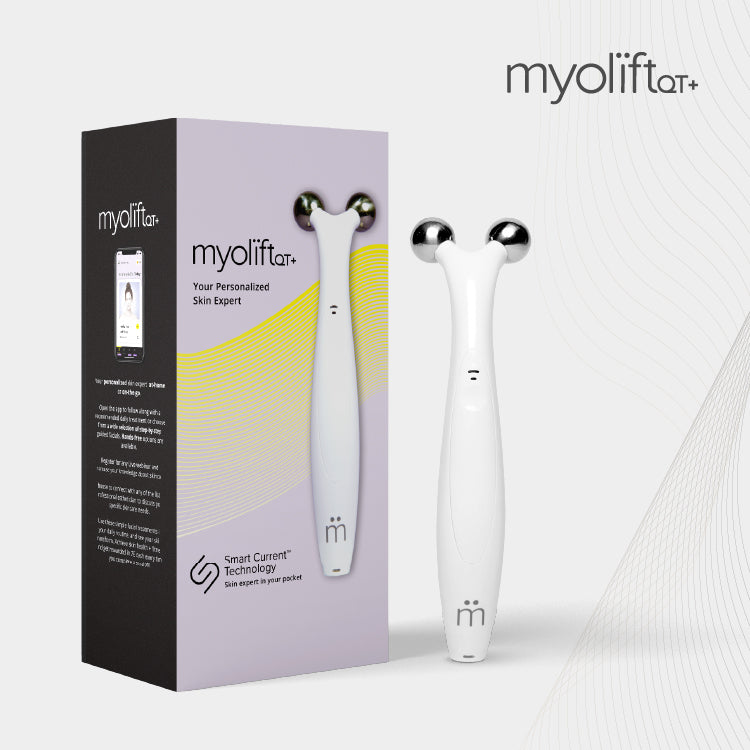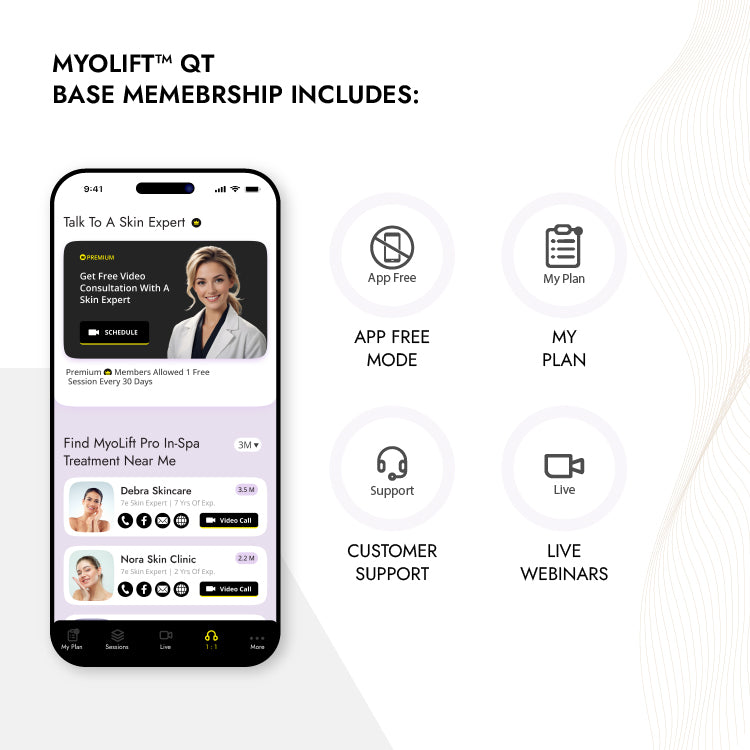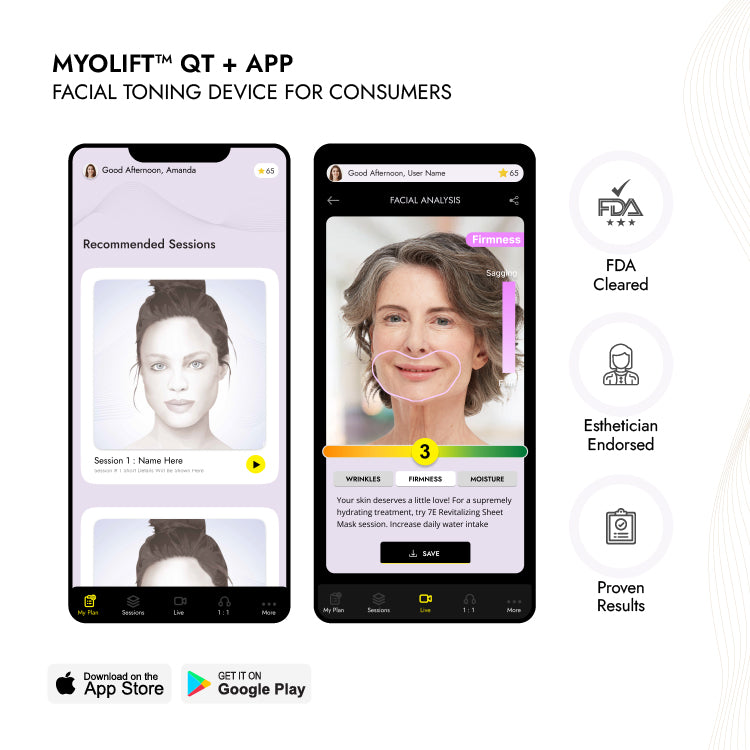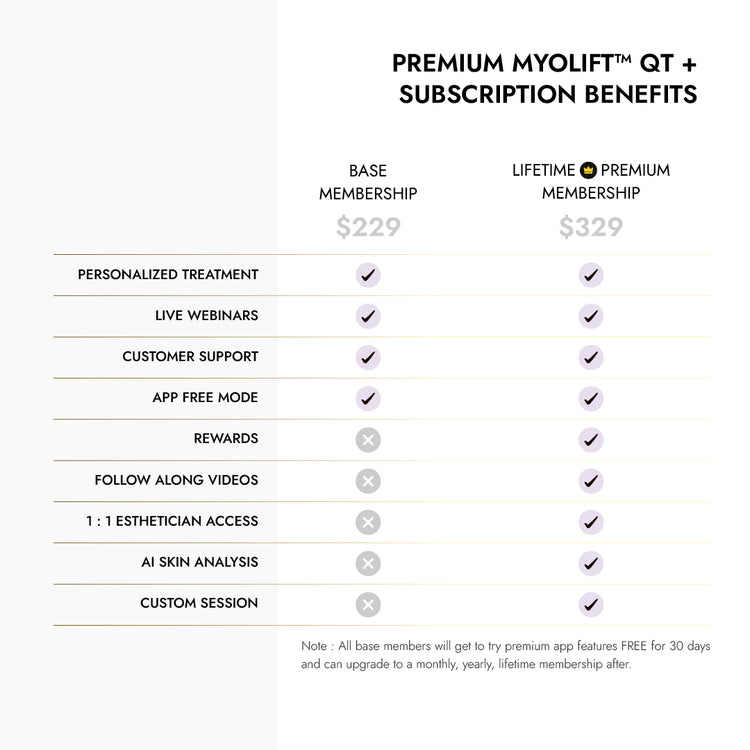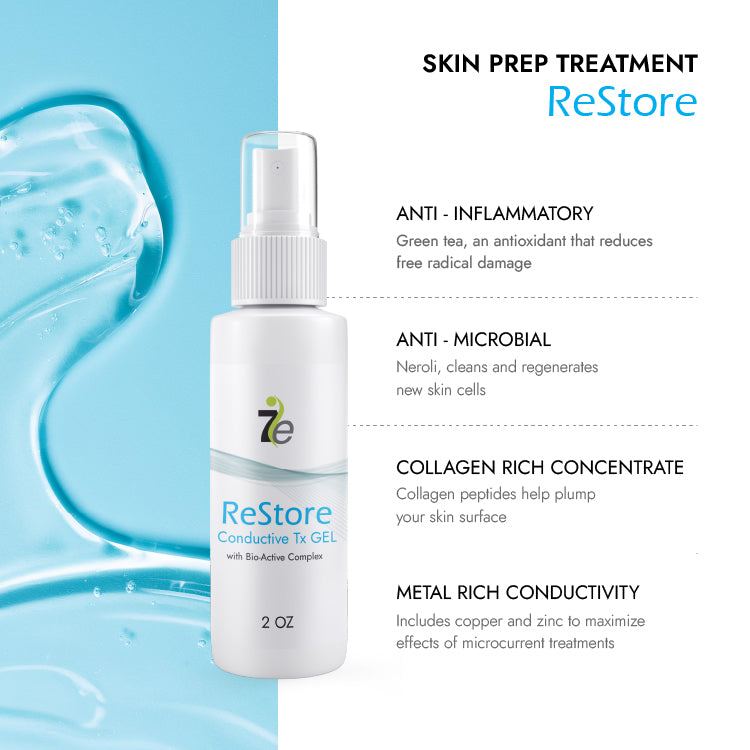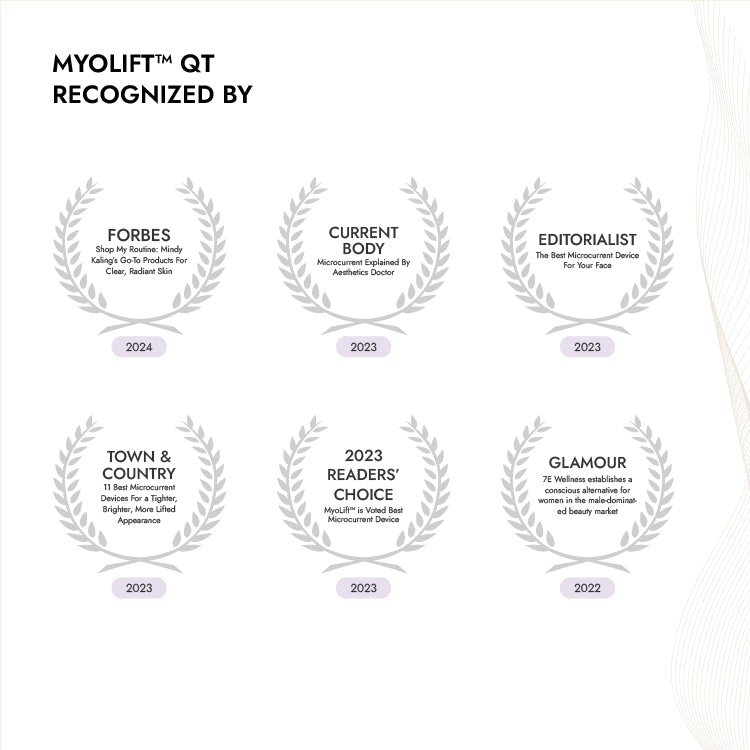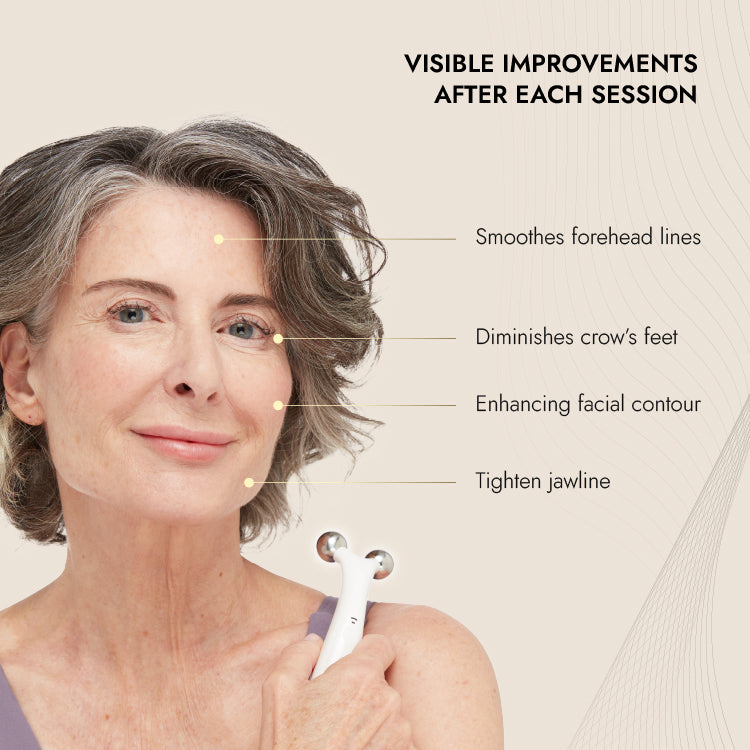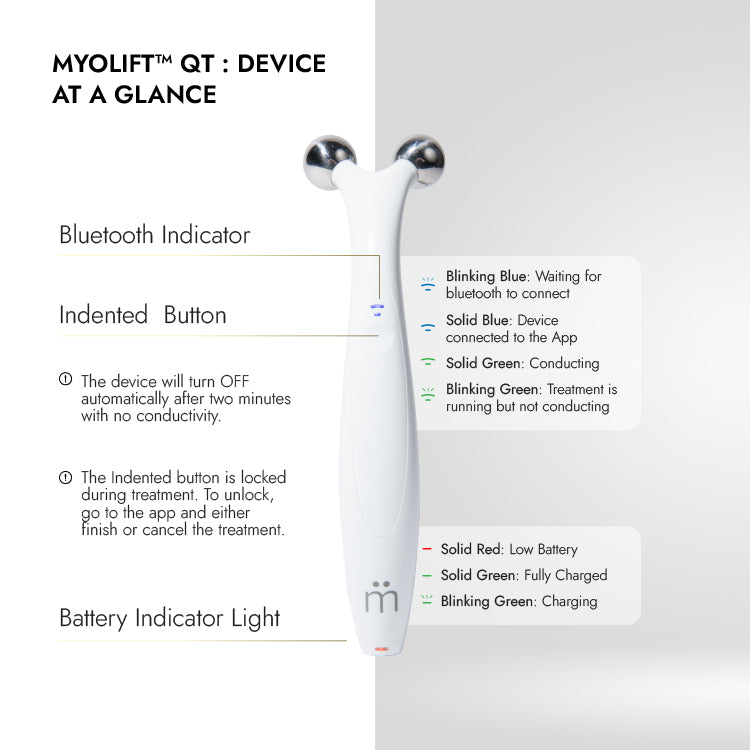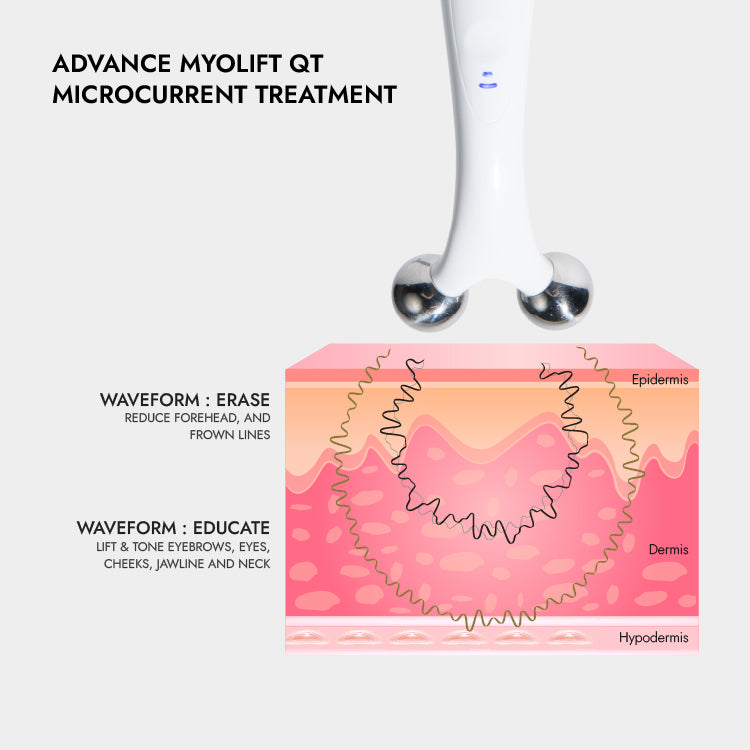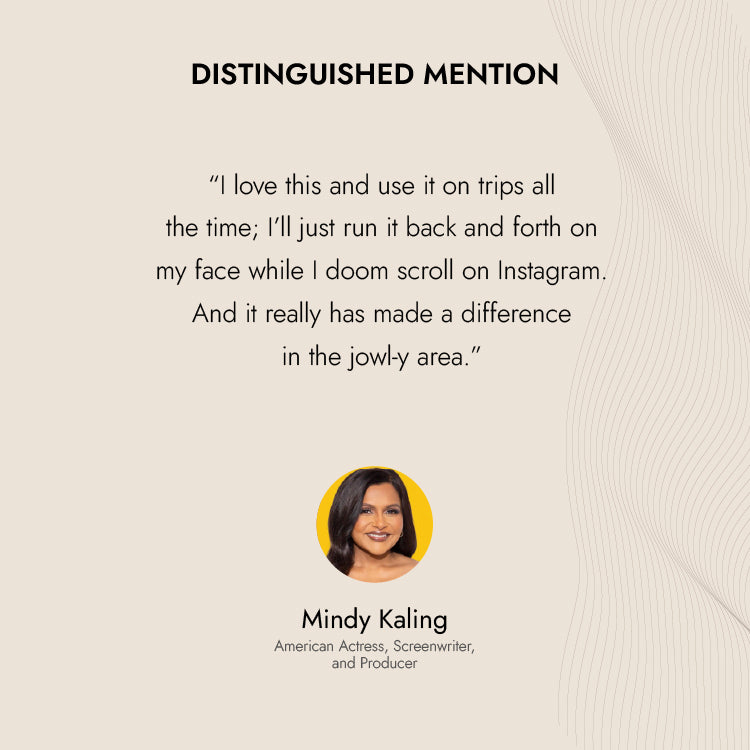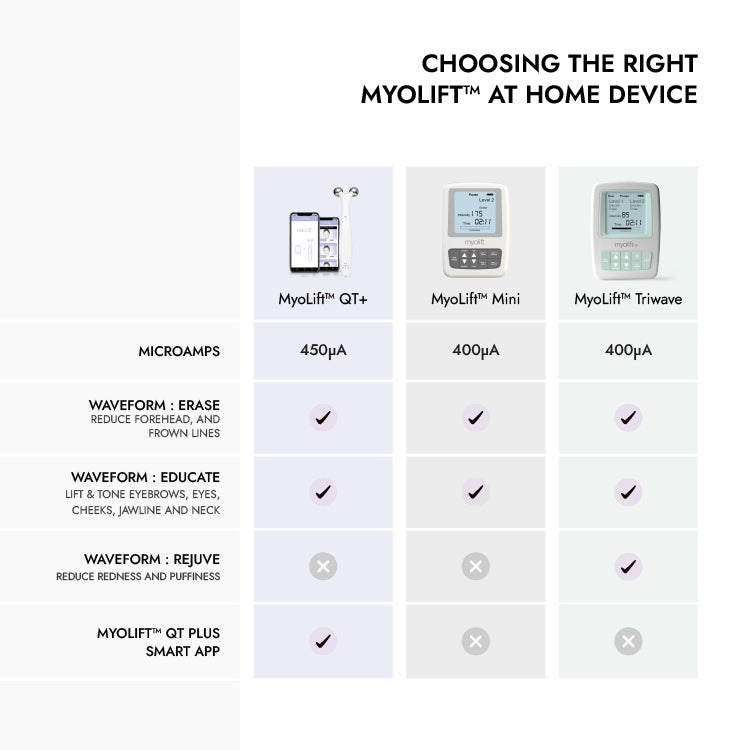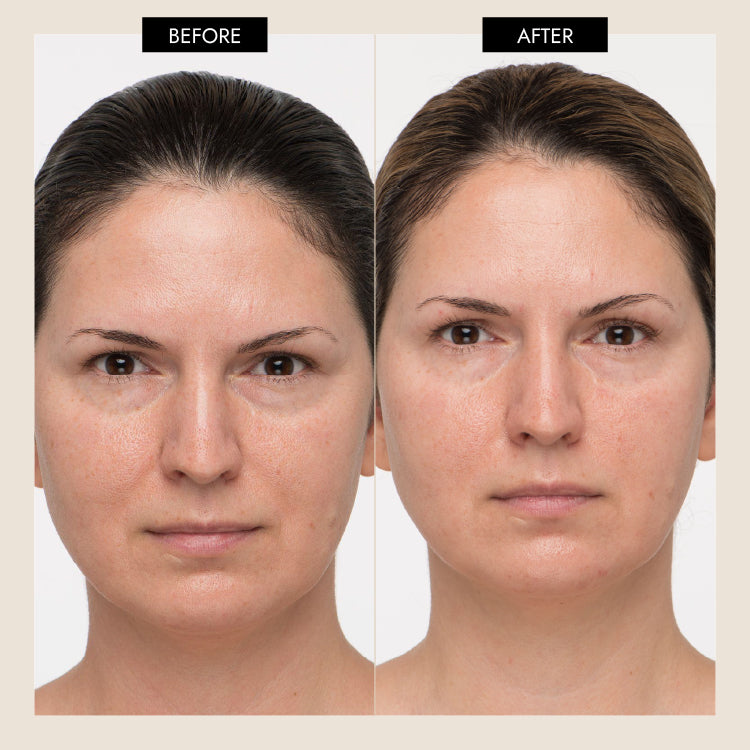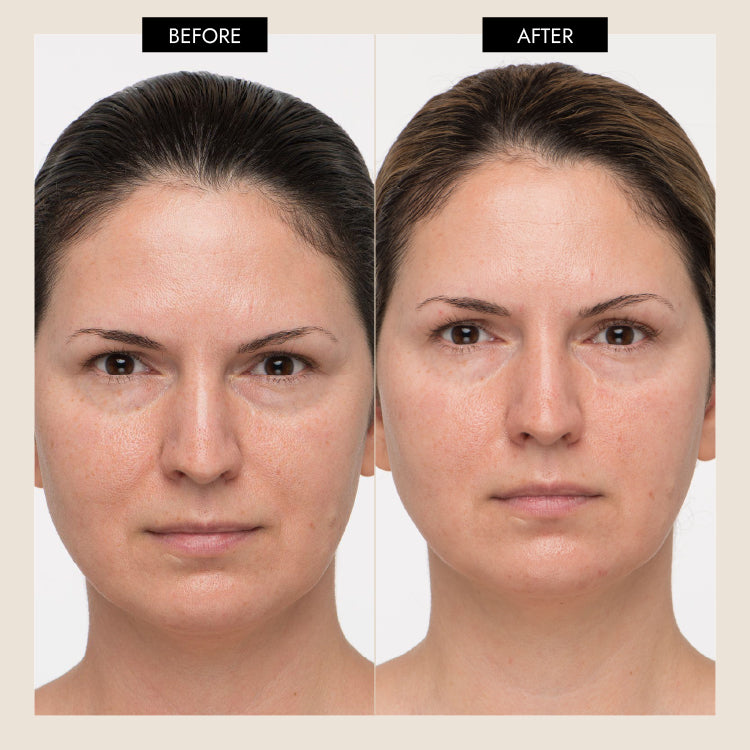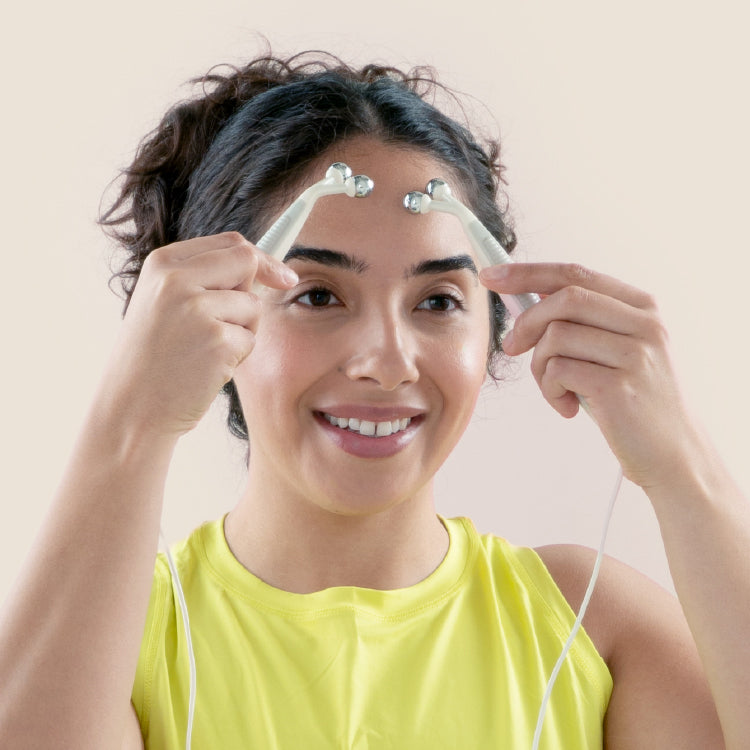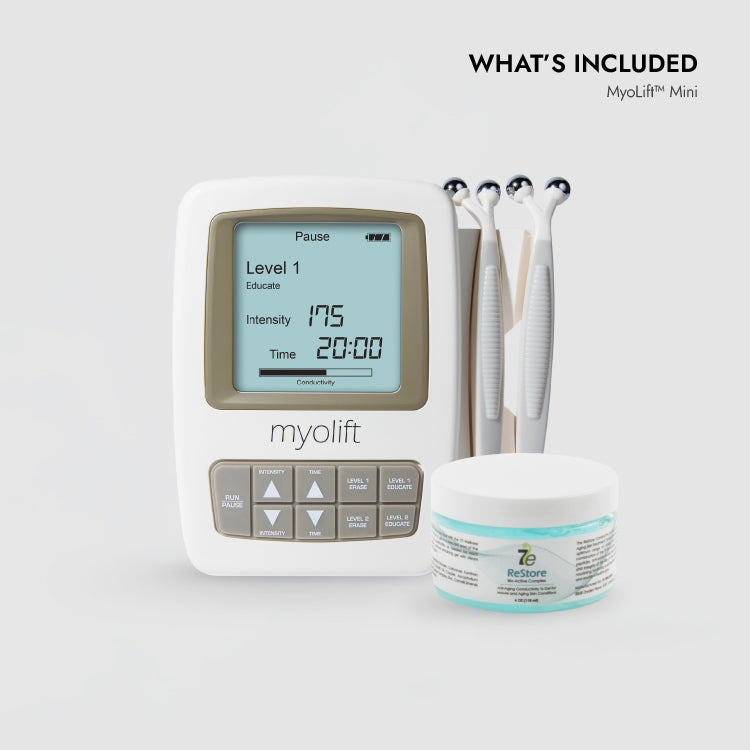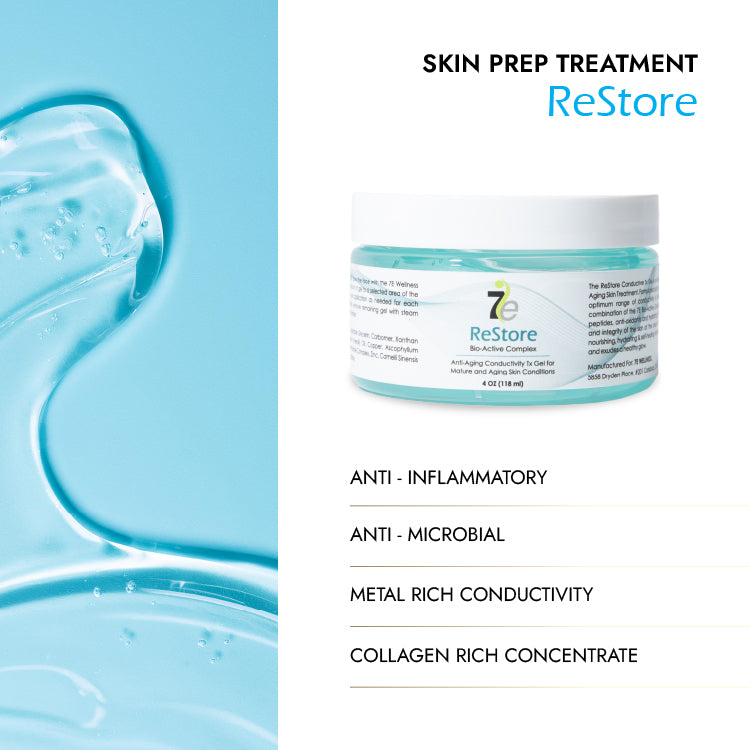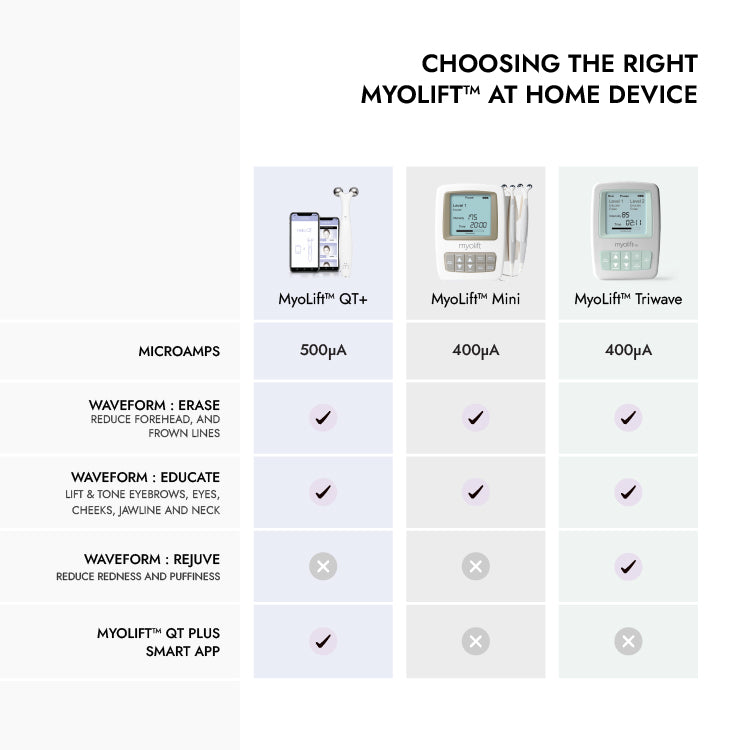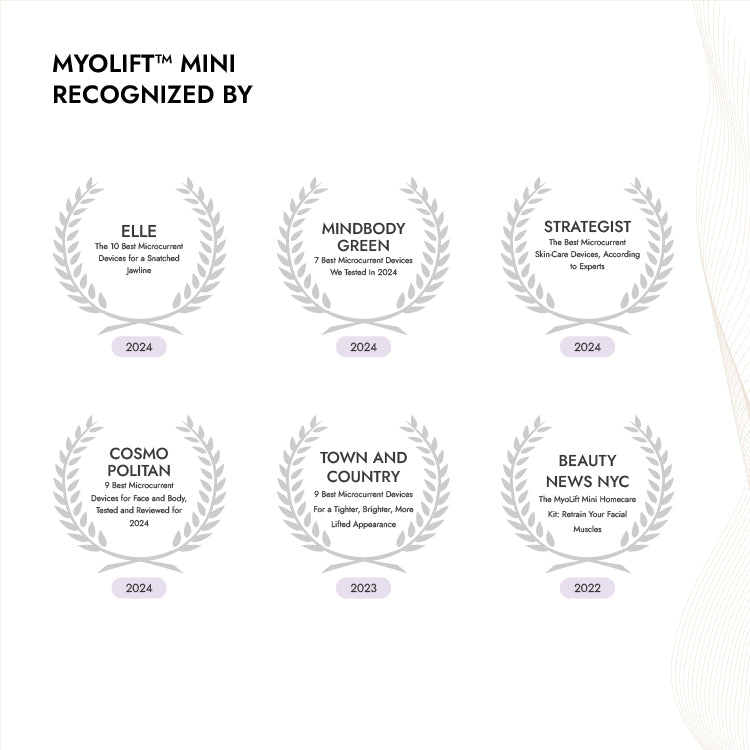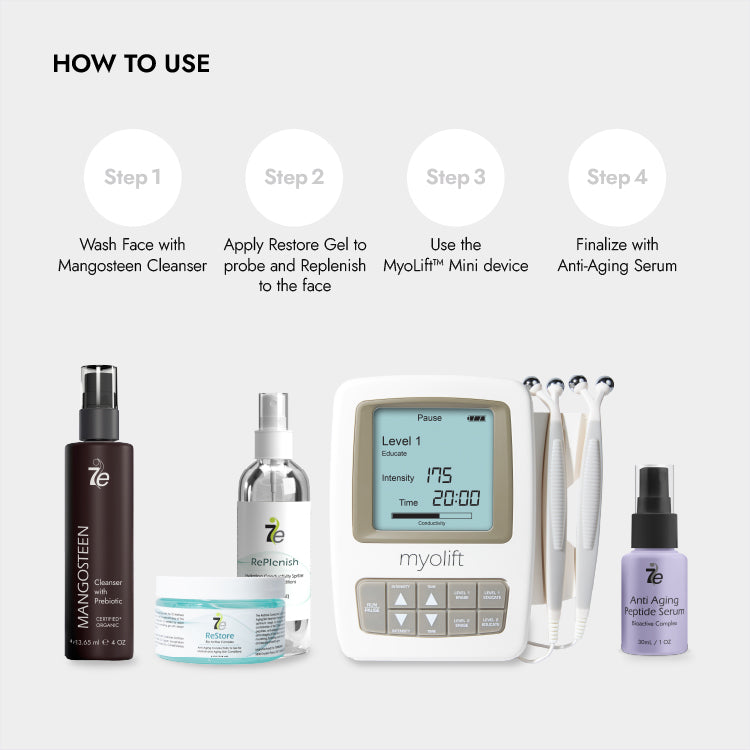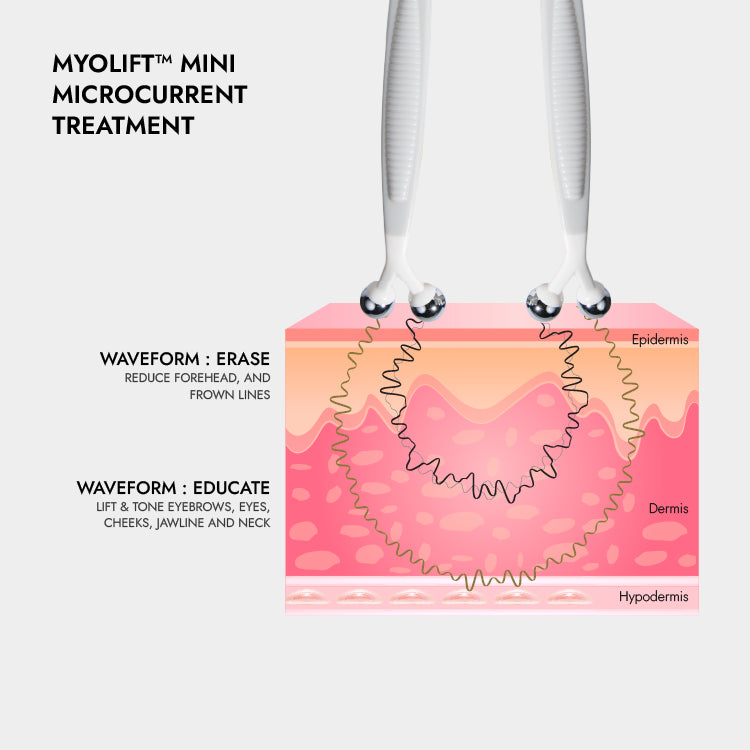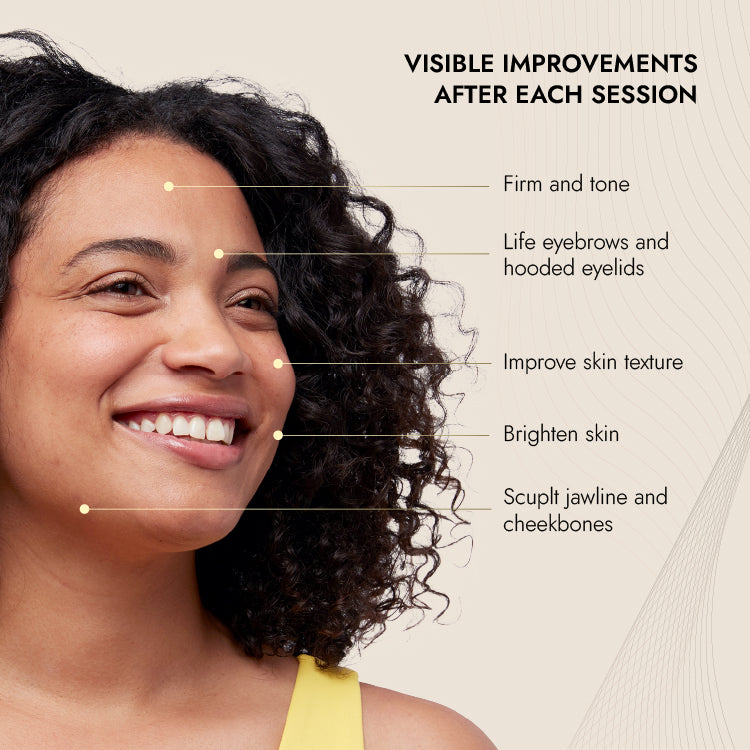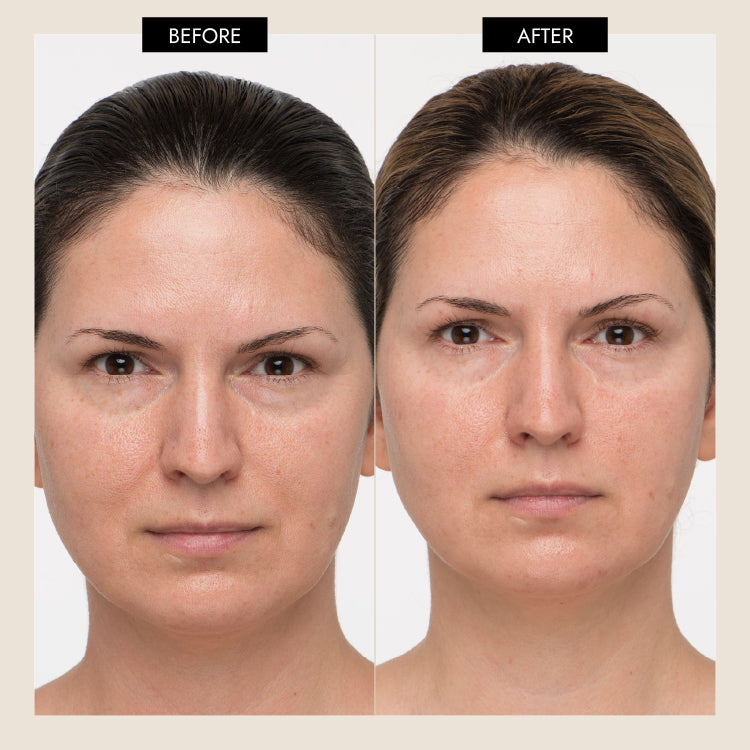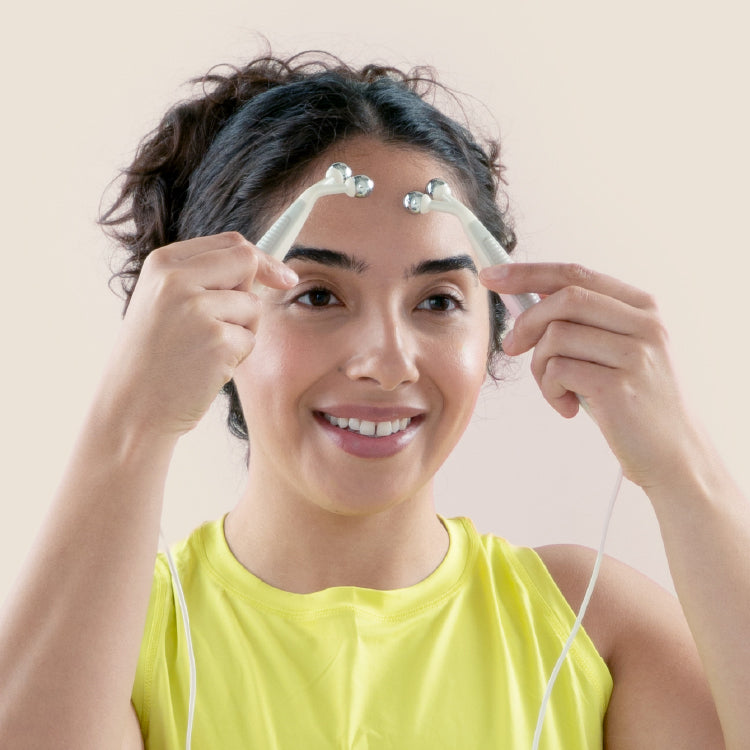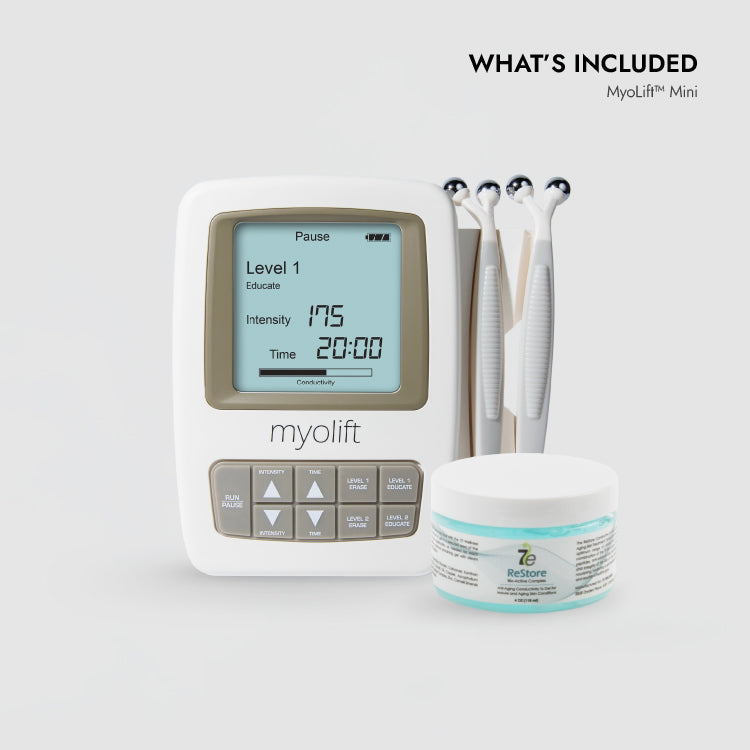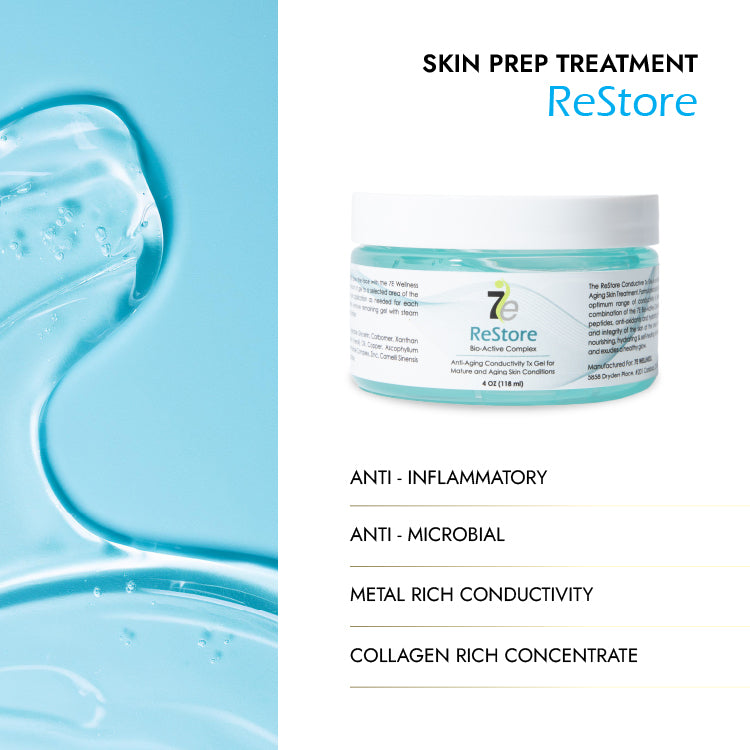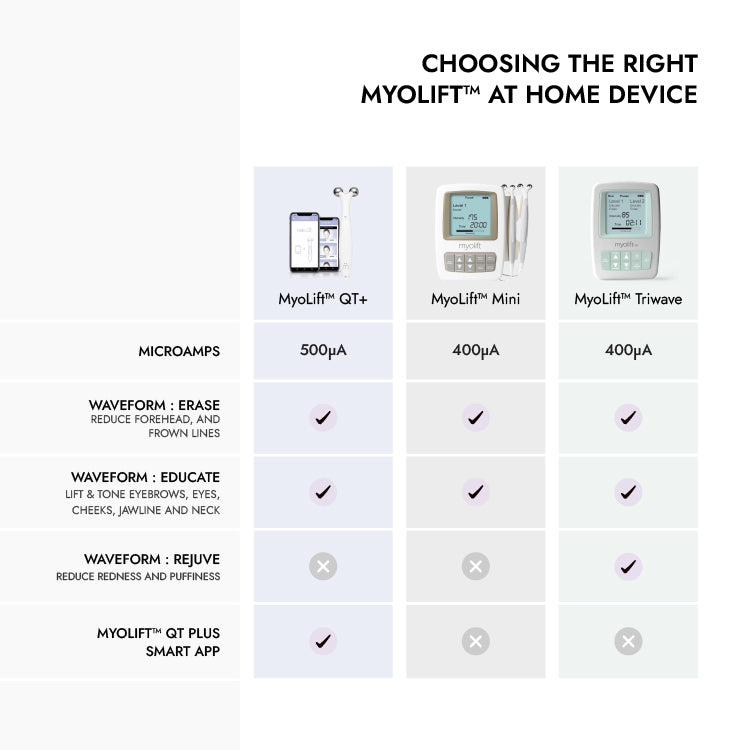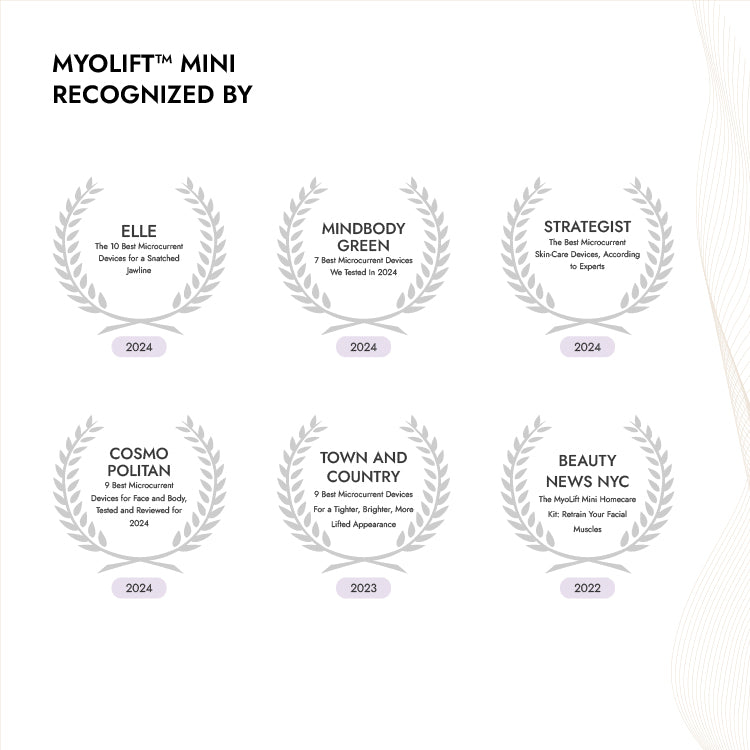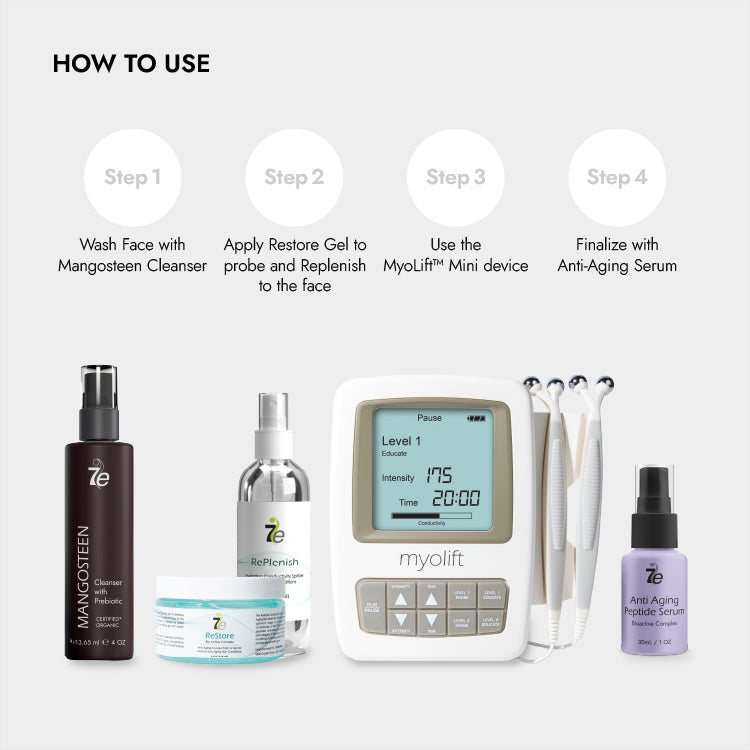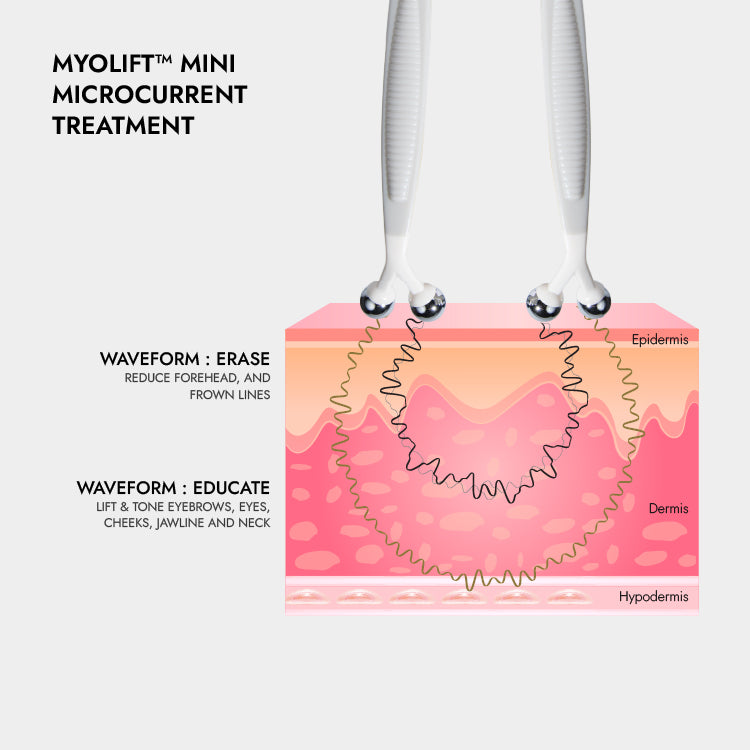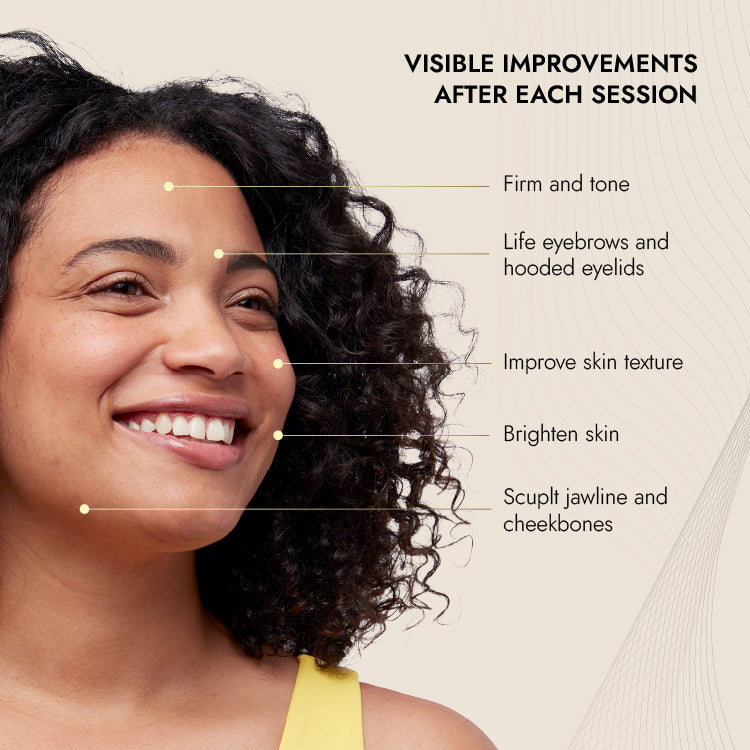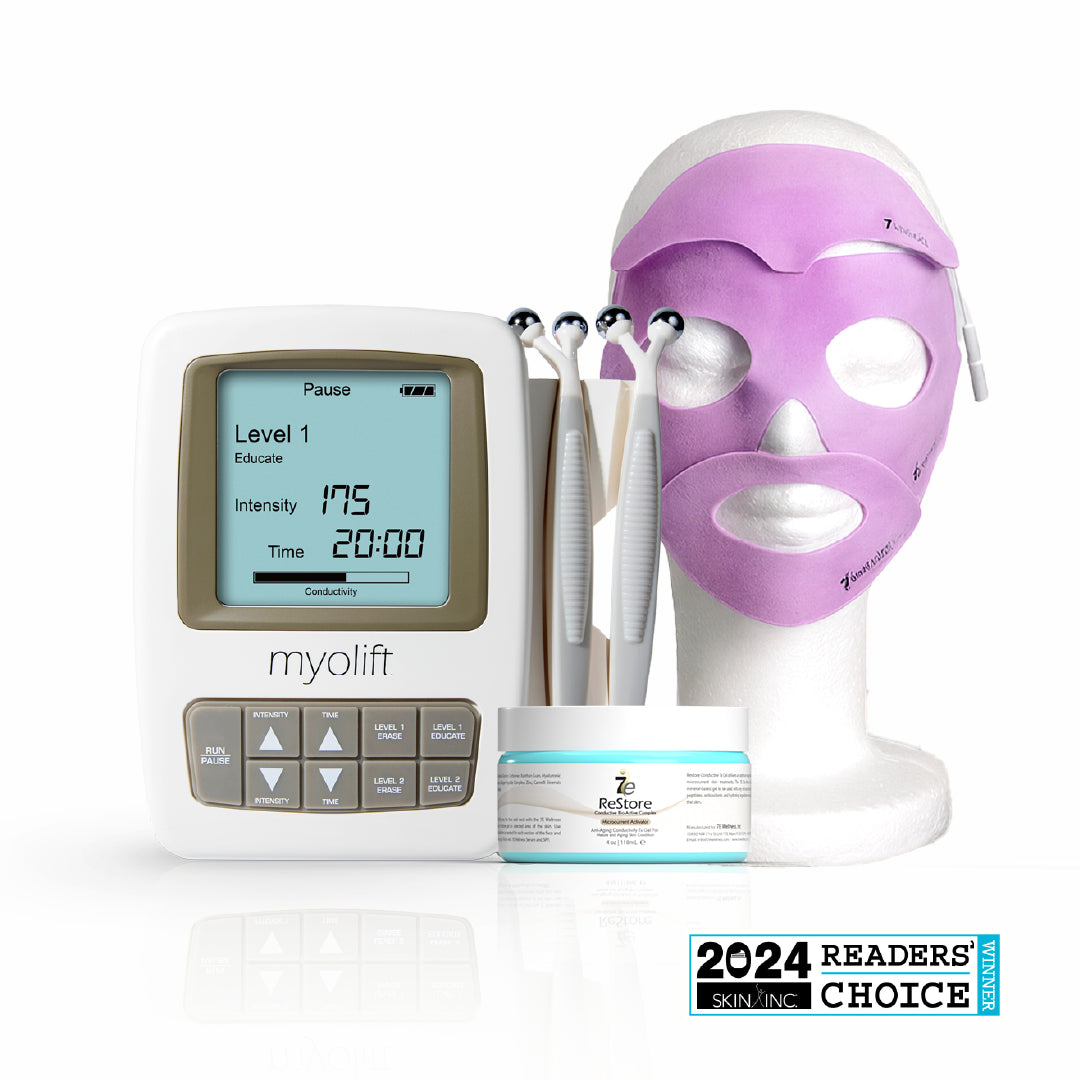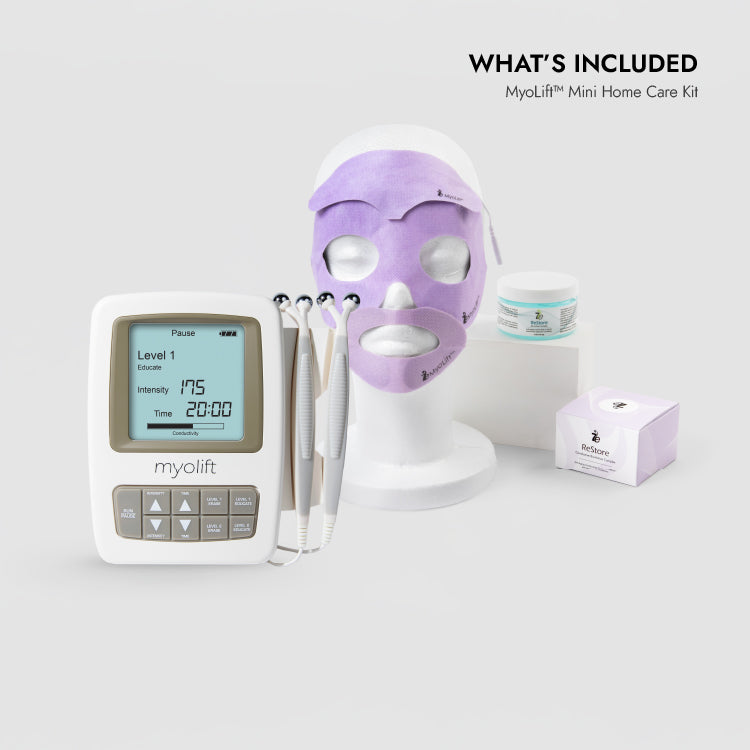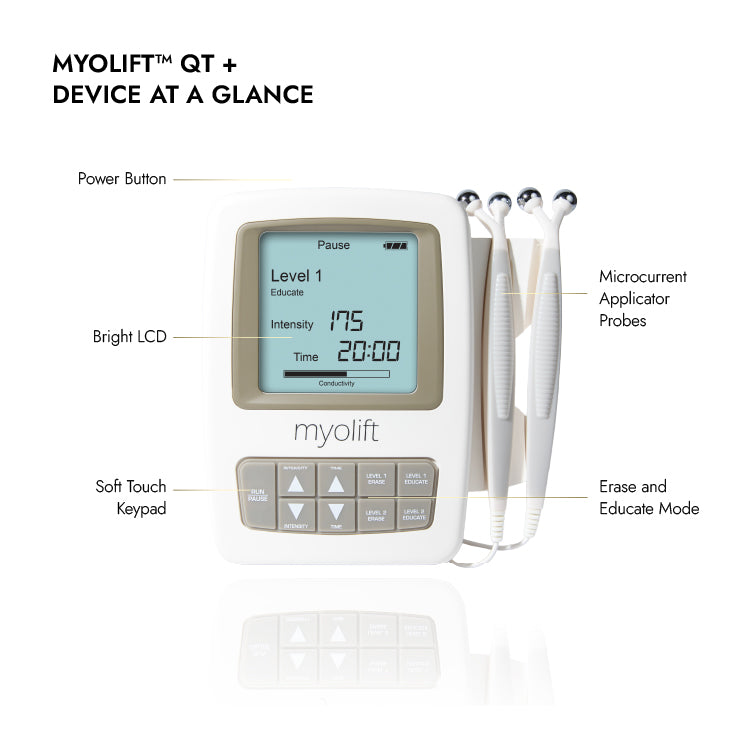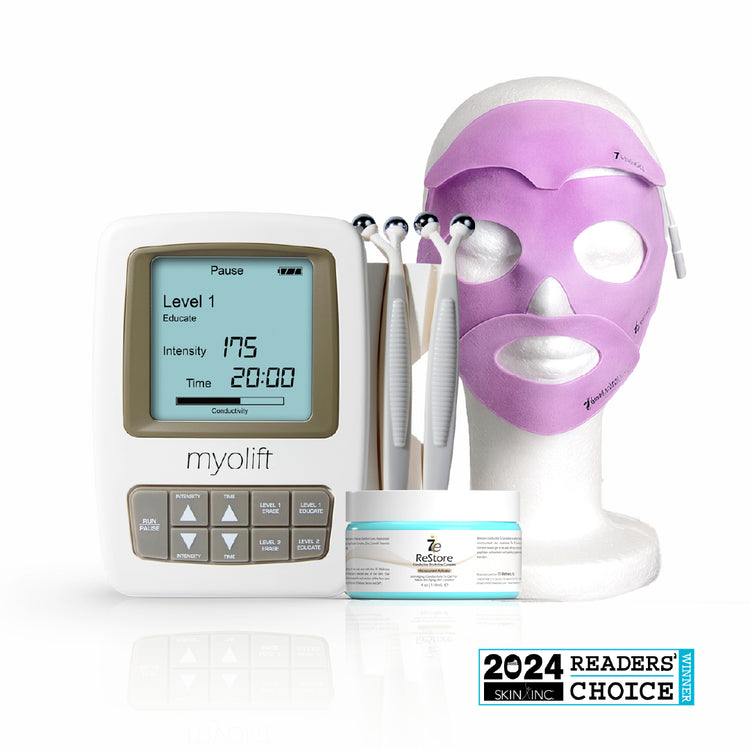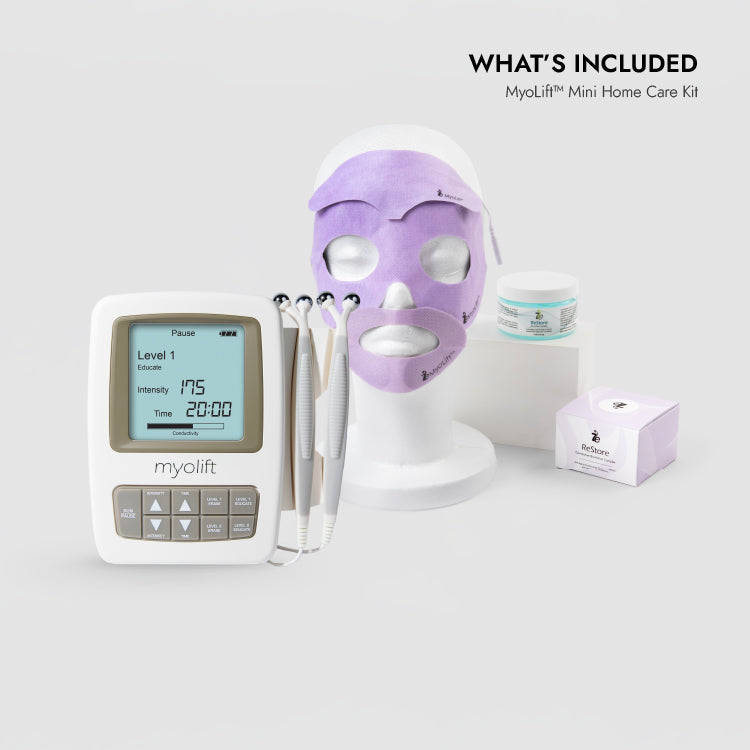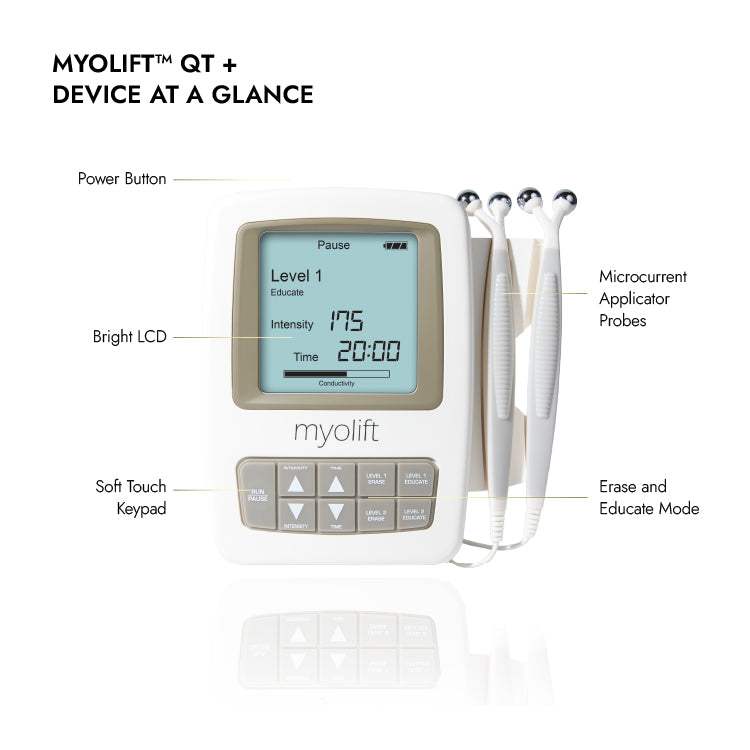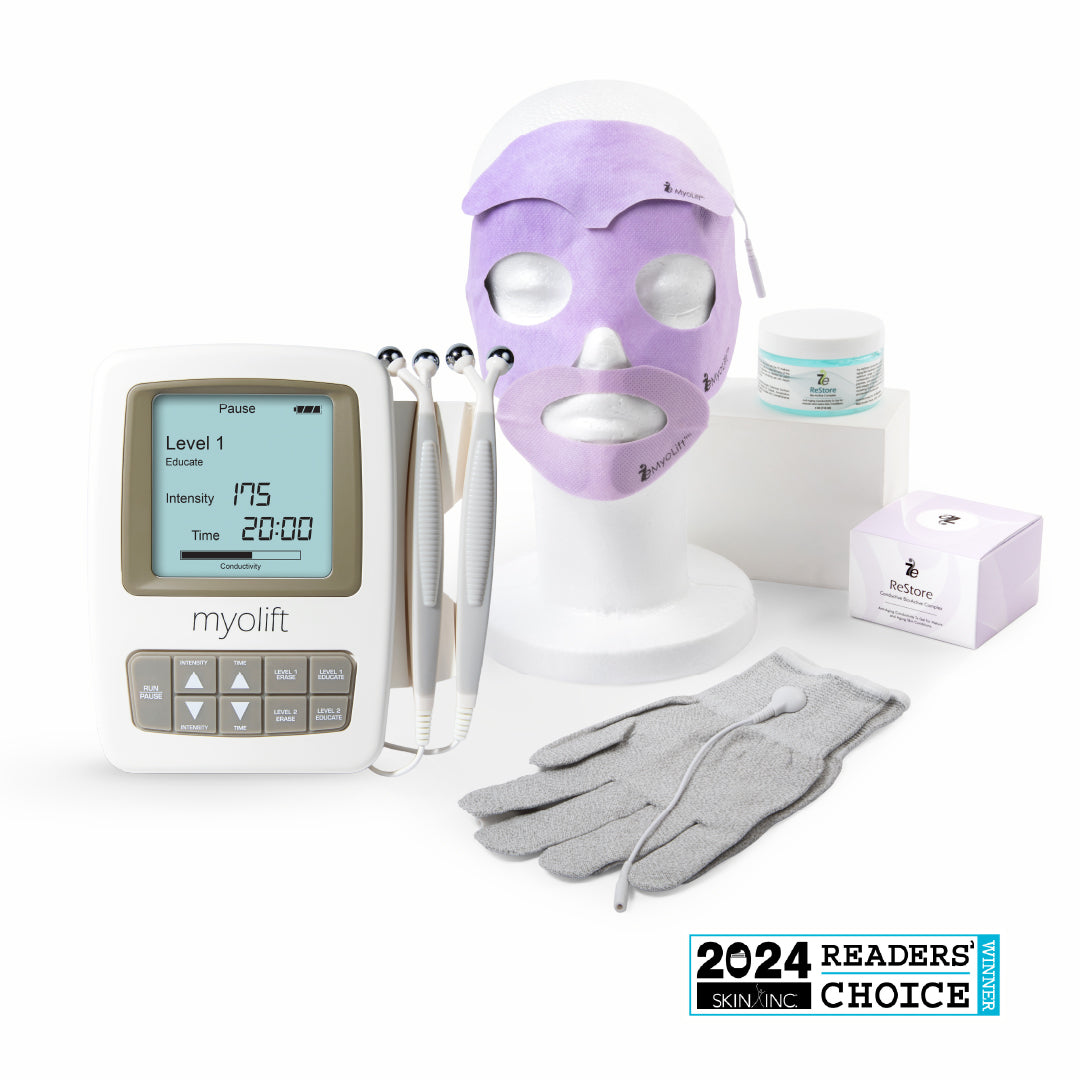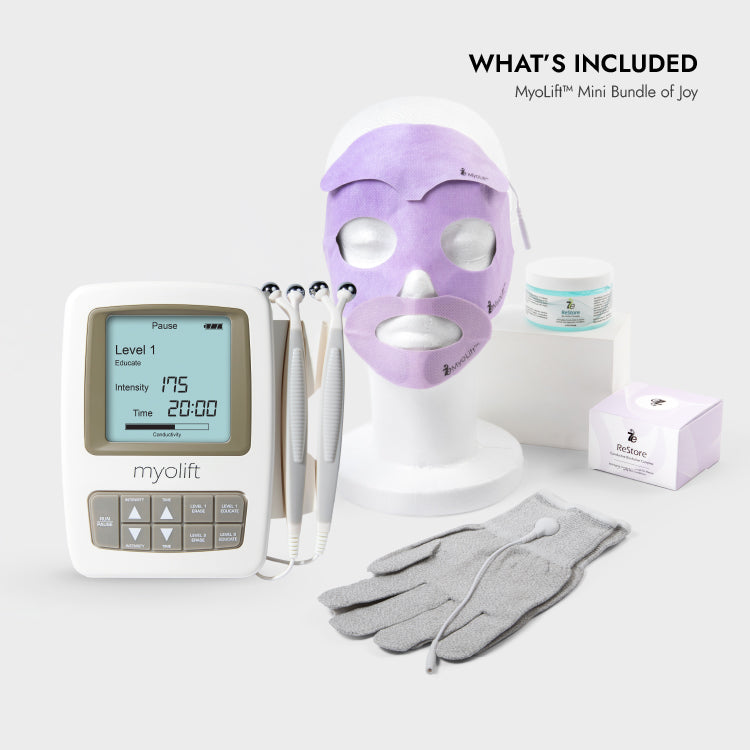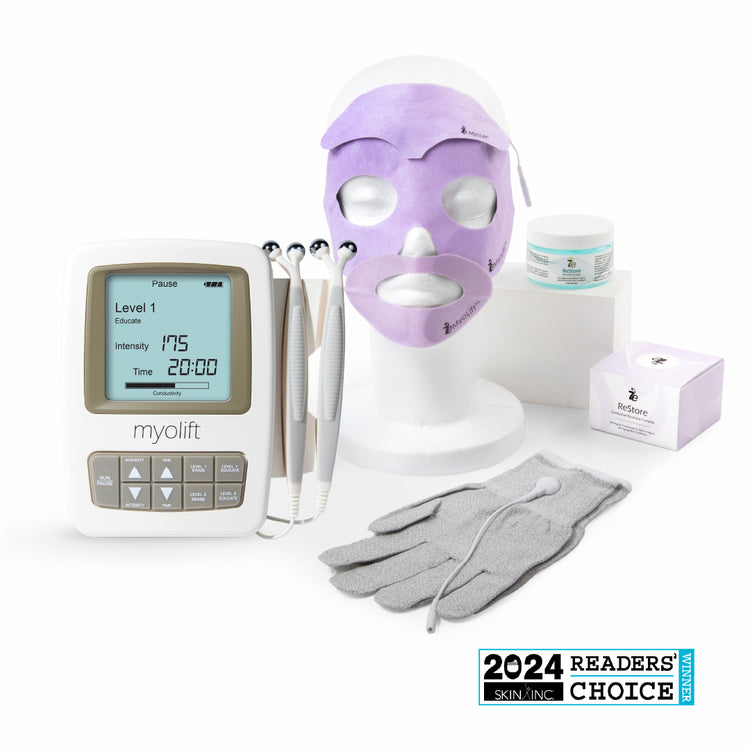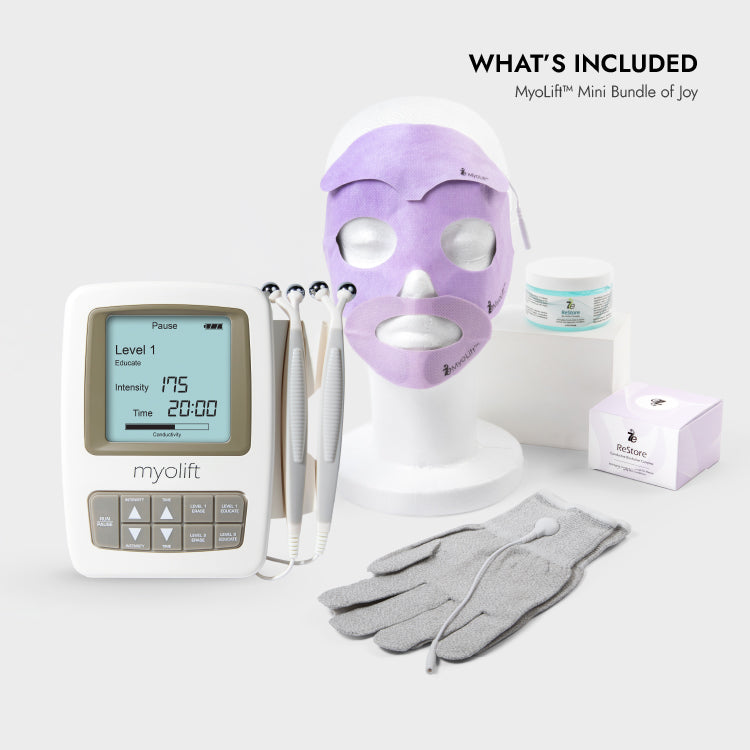Ozempic Face: The Effects of GLP-1 and Weight Loss on Facial Skin and Contours

GLP-1 medications like Ozempic and Wegovy were originally developed to treat Type 2 diabetes. But, they have very quickly entered the mainstream as weight-loss tools.
Their effectiveness has led to widespread use among those looking to shed significant pounds, but that success sometimes comes with a surprising side effect: changes to facial appearance.
Sudden or dramatic weight loss, especially from these medications, can lead to a phenomenon many now call "Ozempic face."
Understanding how GLP-1 drugs work and how they affect the skin can help you take proactive steps to care for your skin while reaching your health goals.
How GLP-1 Medications Affect the Face
GLP-1 (glucagon-like peptide-1) receptor agonists suppress appetite, slow gastric emptying, and regulate insulin levels. All of these factors contribute to significant weight loss. These medications alter hunger cues and food intake, too, helping users curb those cravings.
While the overall health benefits of weight loss can be incredible, rapid fat loss often reveals the delicate structure beneath the face.
-
Loss of volume in the cheeks and under the eyes
-
Sagging around the jawline and neck
-
Hollowing in the temples and tear troughs
-
A dull, tired, or even gaunt appearance
This is where the term "Ozempic face" comes in. But it's not exclusive to those taking GLP-1 drugs. These changes can occur from any form of rapid weight loss and are part of a broader pattern of weight loss and facial aging.
Common Cosmetic Concerns & Psychological Impact
When your body feels healthier but your face looks older or more tired, it can be jarring.
Many people report feeling conflicted: proud of their progress, but less confident in their appearance. That contrast can lead to struggles with self-image or hesitation to continue their weight loss journey.
The goal isn’t to scare anyone off of these medications or weight loss altogether. What matters is understanding the whole picture so you can feel strong and confident in your body and your skin.
Ways to Combat Facial Side Effects
Start with the basics:
-
Stay hydrated and eat a nutrient-rich, protein-forward diet.
-
Avoid smoking and minimize sun exposure.
-
Focus on barrier-supporting skincare with peptides, antioxidants, and epidermal growth factors (EGF).
Product picks we love:
-
Anti-Aging Peptide Serum to strengthen and plump
-
ReVital C Serum for antioxidant protection
-
Restorative Sheet Mask with EGF to help regenerate tired skin
These will help support your skin’s elasticity and glow as you go.
Microcurrent Therapy: A Non-Invasive Solution
Microcurrent therapy uses low-level electrical currents to mimic your body’s natural signals. It’s been used in both medical and aesthetic settings for decades, offering a natural approach to toning and lifting the skin.
How it Combats Facial Side Effects
Microcurrent is essentially a workout for your face. Here’s how it supports recovery from weight loss-related facial changes:
-
Stimulates facial muscles to gently lift and re-contour
-
Boosts collagen and elastin production to improve firmness
-
Encourages circulation and lymphatic flow for a healthy glow
-
Helps active ingredients (like peptides or EGF) absorb more deeply
The Benefits of Microcurrent Therapy
Think of it as a non-surgical facelift for Ozempic face, without needles or dramatic interventions. This means that, first and foremost, it’s non-invasive, pain-free, and requires no downtime or recovery.
It also has the benefit of working gradually, allowing results to set in naturally and subtly. And, there’s the added convenience factor: Even though it can be done with a professional esthetician, it can also be done right at home!
Who Should Consider It?
Microcurrent therapy is ideal for people experiencing:
-
Mild to moderate facial sagging
-
Loss of tone or dullness
-
Hollowed areas post-weight loss
It can also be used preventatively during your weight loss journey to help maintain structure as the fat beneath the skin decreases. That’s why microcurrent therapy for facial tightening is quickly becoming a go-to for people using GLP-1 medications.
Combining Microcurrent Use With Other Strategies
Support your face from all angles:
-
Use your microcurrent device 3-5x per week, or follow your provider’s recommendations
-
Pair it with active serums, masks, and a consistent skincare routine
-
Get plenty of sleep and stay on top of hydration and nutrition
Creating a holistic plan that includes skincare, wellness habits, and microcurrent will give you the best shot at long-term skin resilience.
Reclaim Your Confidence Today
GLP-1 medications are powerful tools that’re helping countless people reclaim their health. But like any major change, they come with side effects.
If you're experiencing facial changes from weight loss, know you're not alone, and you don’t have to settle. With the right approach, you can support your skin and look just as vibrant as you feel.
And, if you’re interested in learning more, you can read our other piece on getting a naturally sharp jawline with the help of microcurrent technology.









